

gair rhydd
est. 1972
Meet the President
In an interview with Gair Rhydd, Students’ Union President Maria Pollard reveals a lack of engagement from the university and criticises the university injuction against protest on campus

James Roberts Editor in Chief
Could you introduce yourself?
I’m Maria Pollard and I’m Students’ Union President here at Cardiff Students’ Union
What did you study?
I did my undergraduate degree in politics, I wrote my dissertation on the far right populism in Germany and how they talk about women and LGBT people, pitting minority groups against each other. I enjoyed my degree a lot.
You came into the role last year after an election which had unprecedented levels of engagement. Despite that, I think many people will be unsure as to the nature of your role. Could you outline for us the responsibilities which you have as SU president?
So it's quite a broad role. I have a role in the Students’ Union itself and also a role in the university.
As President I oversee the political direction of the Students’ Union, although there’s a fairly level hierarchy between me and the other sabbatical officers. So, everyone has a big say and a lot of influence over the whole direction, but I am the
main spokesperson for the union.
Another part of how I set the political direction means that I oversee the campaigns that the union runs. This year you’ll see stuff from me about housing in October. We’re going to have a housing fortnight to get people in to talk about student housing, exploitative landlords, how to advocate for yourself, how to make sure that you’re signing a good contract and advertising the resources that are our student advice service offers, because I think they’re quite underutilised. Then I’m also going to be doing stuff about the Senedd election.
Then there’s the external political element to my role. For example, Cardiff Council is currently trying to limit parking permits for students, so I’m doing some work externally lobbying politicans on that and other student issues.
I’m also the chair of the board of trustees of the union. A lot of people don’t realise how massive the union is. Obviously, we’re a charity and student interest, and advocating for students is at the heart of everything we do, but we do also have quite a big commercial side, so I’m also on the board of a large business.
This involves maintenance of the building and stuff like YOLO and
the Taf, as well as sales. Whilst at the end of the day I don’t decide on those things, me and the other officers do have influence as members of the board, and we have a lot of say over how stuff is driven. Some of the time it’s difficult because the Students’ Union needs to make money to do its student resources, to run campaigns and provide student advice.
Do you think there is a tension between the Union being a commerical body and a body that represents students at times?
There are obviously some conflicts. For example, balancing YOLO and nightlife with student welfare. Particularly if there is a perception that we are perpetuating student drinking culture. But we are trying to provide more opportunities for students who don’t drink to participate in social events, whilst also making sure students who do drink are able to do it in a safe way. This Freshers’, the Officers and SU really made an effort to provide more non-alcohol-centred events. Then also a huge amount of work has been put into student safety at our club events. But some people look at the SU and they reduce it to just being YOLO, like it’s ‘YOLO, nothing else’ or it’s ‘why does the
Students’ Union focus on YOLO?’, but I think you have to look at all of it quite holistically. We have this commercial side, so that we can run all these student services, and a lot of students’ unions don’t have the commercial side that we do.
Whilst we do get a block grant from the uni every year, we are able to supplement it with other stuff. If we were just reliant on the university, particularly in the current financial crisis, it would be very difficult for us to operate. We’re one of the biggest students’ unions in the country, the buildings are massive even compared to other big Russell Group universities... To read, turn to page 12
Check out our Instagram below for exclusive updates on our articles!

The UCU Ballot for a New Strike Amongst University Staff
Alicia Tariq News Editor
The University and College Union (UCU) are allegedly announcing for strikes next year against Cardiff University management to prevent staff redundancies in 2026. Gair Rhydd can confirm that the UCU are running a consultative ballot over issues on redundancies, workload, and the wellbeing of staff, with voting ending on Friday 3rd October, which has now sur passed. If voting is successful, the UCU will potentially move to a full official ballot to prevent job cuts next year, possibly causing strikes that could result in. impacts across all cohorts....
To read, turn to page 4
Patagonia: Profiad Dwy Fyfyrwraig
Hannah Williams Pennaeth Taf-od
Eleni, derbyniodd deg myfyriwr o Ysgol y Gymraeg ysgoloriaeth i dreulio cyfnod dros yr haf yng nghymuned Gymraeg y Wladfa. Dyma brofiadau dwy ohonom o dîm Taf-Od, a oedd yn ddigon ffodus i fod ymhlith y deg! Mae’r syniad o gymuned Gymraeg mewn gwlad mor bell â’r Ariannin wastad wedi sbarduno diddordeb ynof, ac rydw i’n hynod ddiolchgar fy mod i wedi cael y cyfle i’w phrofi dros fy hunan. Heb os, dyma un o’r pethau gorau i mi eu gwneud! reuliom ni bythefnos cyntaf y daith yn ardal Dyffryn Camwy, lle buom yn brysur yn mynychu gweithgareddau amrywiol yn y Gaiman, Trelew, Dolavon, Rawson a Phorth Madryn.
To read, turn to page 11
Rising Sounds: Takes on Cardiff With LMS Support
Ellie Evans and Eve Harris Spotlight Editors
Cardiff University’s Live Music Society presented an exciting event at Clwb Ifor Bach on Tuesday night. The atmosphere certainly lived up to every claim from Gene Gallagher, frontman of the rock trio Villanelle, a band that has sold out their tour and supported Liam Gallagher’s 30th anniversary tour. Having only released one single, ‘Hinge’, which made its debut on the 10th of September, their family ties have already gained them significant attention. Born into pop and rock royalty
To read, turn to page 6
Editor-in-Chief:
James Roberts
Deputy Editors:
Bhamini Khandige
Aneurin Davies
Head of Design:
Olivia Nilsen
Design:
Seven Standen
Elisa Main
Head of Opinion:
Miriam Southall
Opinion:
Bethan Jones
Ffion Perkins
Helen Turnbull
James Kittering
Nancy Roberts
Oliver Hanlon
Head of Review:
Ruby Collins
Review:
Andrew Stewart
Kit Robinson
Thomas Cunnick
Head of Taf-Od:
Hannah Williams
Taf-Od:
Ela Rhys
Elen Williams
Erin Davies
Gwenno Davies
Hanna Morgans Bowen
Ifan Meredith
Head of News: Ella Simons
News:
Alicia Tariq
Gabi Hunt
James Burns
Kani Abdullah
Head of Spotlight:
Rachel Bedding
Spotlight: Ellie Evans
Eve Harris
Eve Yates
James Brindle
Molly Spencer
Head of Politics:
Ruaidhrí Gillen Lynch
Politics:
Jessica Ling
Oliver Dermody
Rowan Stringer
Sophie Scott
Head of Sport:
George Jones
Sport: Harvey Knowles
Luke James
Mael le Paith
Head of Puzzles: Daniel Raybould
At Gair Rhydd we take seriously our responsibility to maintain the highest possible standards. We may occasionally make mistakes, however, if you believe we have fallen below the standards we seek to uphold, please email editor@gairrhydd.com.
You can view our Ethical Policy Statement and Complaints Procedure at cardiffstudentmedia. co.uk/complaints. Opinions expressed in editorials and opinion pieces are not reflective
and
communications or the organisations
Gair Rhydd is a Post
A Note From the Editor
So here we are, beginning another year of Gair Rhydd and I find myself the Editor in Chief of this paper which has been at the centre of my time thus far at Cardiff. I could never have imagined that I would be writing these words over two years ago, when I first encountered the paper at freshers’ fair in 2023. Last year I joined the team as a section editor on Opinion, it was a great privilege to have a platform to express myself in Wales’ oldest student publication.
I want to begin the year by thanking Belle for all the effort and toil which she gave to the team, she set a high standard of dedication which I will try my best to meet. She prompted me to apply for the editorship and I am grateful that she did, I am not sure I would have done otherwise. Student media is largely defined by the brevity in which its leadership is in place, this is the case in all student publications, and thus much changes for year to year, each editor changes the focus, style or tone of a paper. I will touch upon the changes we are making or to make in a moment, but despite this I am still immensely grateful for all Belle did for Gair Rhydd last year, she has left us a publication ready to start punching above its weight again, and able to challenge and inspire all the members of the student body.
I spent this summer building the team and filling roles. I found this immensely inspiring. We have a large and diverse team of passionate and talented writers, designers, proofreaders and digital contributors. Through meeting everyone face to face or online, I have become stronger in my belief that Gair Rhydd can do something really impactful this year.
And how will we make an impact? One word, engagement. We are seeking out stories and voices to bring to our readers. From political leaders to annonymous informers our ears are open and we want to help better inform the student body on things they should know. There will be more on this to follow, we begin this year with an interview with SU President Maria Pollard.
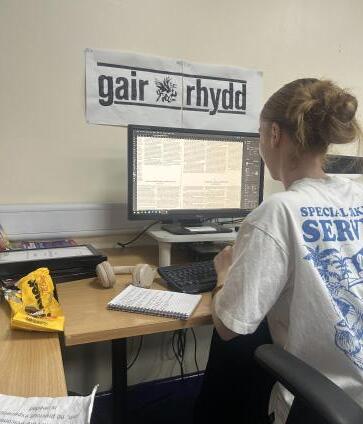

Longtime readers will see that the design of the paper has been changed, infact this is the most significant redesign the paper has had in at least a decade. The design is based on archival research done by myself and Liv, our brilliant Head of Design. Our new banner for example, is based opon one used in the late nineteen eighties and early nineties. We hope that people will appreciate this change of skin.
In another change of approach Gair Rhydd is going more digital this year. Alongside an improved and more consistent social media presence led by our Deputy Editor Bhamini, we are currently working on the website. Our other Deputy Editor Nye, along with the Online team are working on a new and improved design, hopefully we will be able to update our readerrs in the next edition.
This role has of course changed my outlook for the year, engaging means being engaged all the time, and I certainly feel as though I am on duty all the time. But I wouldn’t change it for the world, Gair Rhydd has been passed onto me and I am passionate about keeping it going stronger and better than before. I will work as hard as I can for our members, contributors and readers, and with luck this will be a year to remember.
Gair Rhydd am byth!
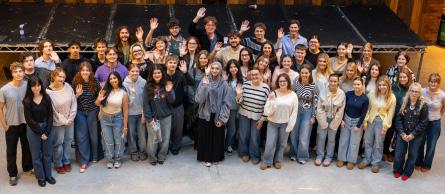
Photos by Kas Bayat

Cathays Housing Crisis: Mould, Damp, and Rising Costs
James Burns News Editor
The start of a new year university signifies change, not only in an academic capacity but also in the entire makeup in the mise en scène provided by a students living arrangements compared to their previous year. The task of finding an appropriate living set up is fuelled by an array of potentially unachievable goals. How far is my walk to campus? Who am I going to live with? What is the perfect layout for me? A seamless outcome to every single question is not the reality for a student, and they accept this. For the most part they begrudgingly understand as students looking for short to medium term rented accommodation that certain sacrifices may have to be made. The more intriguing conundrum for students is where does this line of compromise lie? Does this extend to damp matches, bedbugs, mould, and rats?
Cardiff’s premier student area, Cathays, home to a third of the City’s 36,300 students boasts over 1,400 student houses.
“Seagulls, smelly bins and students doing the walk of shame after a night out would all feature on a morning walk from home to a lecture” all added to Cathays’ “unique brand of charm” A local resident told CPS homes. It’s no surprise then that such purposeful chaos blended with a housing market that accounts for 58% of Cardiff’s HMO’s (Houses of Multiple Occupation) causes problems in the living conditions of those in Cathays. The higher occupant density in Houses of Multiple Occupancy (HMOs) creates far more moisture, which combines with inadequate ventilation, insufficient heating, and sometimes poor building upkeep to cause significant mould issues.This combined with the absence of students for potentially four months of the years the same issues of upkeep, cleanliness and ventilation ensue.
Just last year the BBC Wales reported of Cathays students struggling with bedbugs, rats and mouldy bathroom walls. Wales Online even reported an incident in which a house of seven students faced unbearable black mould that significantly affected the resident’s health, in a story that accumulated with a large
Tsection of the ceiling collapsing and the students having to leave with immediate effect, questioning the safety and security of students living in Cathays. Such horror stories are undoubtably likely to cause distress and a feeling of anxiety amongst students’ house hunting for their coming year, as well as students who wait nervously for their first problem to arise. What would appear as a declining of quality has not been reflected in the expense, Cardiff house prices have seen a rise of 13% in just a year. Most students now pay over £500 a month, even in houses of usually six to eight. Deio Owen, the vice president of Cardiff’s Student Union Change is a necessity, and evidently not just in the student’s housing preferences, but the entire sector. Increased legislation on the prices landlords can charge as well as the quality and rapidity of their co-operation with their tenants. As an army of academics continue to descend on Welsh capital each year, it is yet to be seen whether Cathays will be able to provide a stronger balance between standards of living and affordability.
Former NHS GP Practice Manager Senteced for Fraud
what she had stolen.
Ella Simons Head of News
his sentencing outcome sends a clear message that diverting funds from the NHS is unacceptable and will result in serious consequences, including a criminal record.” This strong statement from Emily Thompson, Counter Fraud Specialist at NHS CFS Wales, is in regard to a Welsh NHS Practice Manager who committed high levels of fraud at a community surgery in Neath, stealing up to £50,000 that was then put in her own back pocket and taken away from the patients who trusted her with their and their family’s care.
Kimberly Wilson, 52, a South Walian from Skewen has been sentenced to pay a further £5,000 on top of a prior £20,000 she had paid back to Castle Surgery in Neath, of which repayment was finished on 21st July in 2025 earlier this year. At this establishment, where she managed the practice, she was employed between April 2019 and March 2023, Wilson’s dismissal for gross misconduct was served earlier this year where it was decided that within this time, she broke the trust of the community by stealing £49,213.08 for her own personal gain. This meant she has been ordered to pay back half of
On 7 August 2025, Wilson was sentenced at Swansea Crown Court to two years’ imprisonment, suspended for two years. In addition to this suspended sentence, she was ordered to carry out 200 hours of unpaid work and complete 25 days of rehabilitation. She had previously pleaded guilty to fraud by abuse of position at Swansea Magistrates’ Court on 21 May 2025 due to her actions of a gross abuse of power, that ordered the strict repayment schedule after her fraud crimes were found guilty.
The concerns surrounding the missing money first come to light from an account from the surgery who recognised inaccuracies and irregularities in the practice’s books that Wilson ran. then was then passed onto a financial investigator from NHS CFS Wales. The investigator obtained a production order under the Proceeds of Crime Act (POCA) 2002, which allowed access to Wilson’s bank records, of which the access to her bank accounts confirmed the findings. These records confirmed that she had used the funds to cover personal living costs and to support a quote on quote ‘gambling habit’.
According to the NHSCFA (the NHS Counter Fraud Authority) they said that “Wilson was using the practice’s business bank account to buy goods for herself and transferring
money into her personal account, under the references “petty cash” or “advance” where she spent the money that she had stolen on day-to-day expenses and her gambling addiction that she often funded through the surgeries money.
Wilson, a local woman and a high standing member of her community now criminal, and it is highly suggested that her actions were mainly motivated by greed and an abuse of power that likely comes from her position of power at the practice she managed. Many locals are left feeling shocked and upset by the news, feeling Wilson should do more for her crimes with Facebook comments on the Swansea Bay News’ Facebook stating “Why only 25k, should be made to sell any assetts to pay full amount back” with others in full agreement to comments just like this one, demonstrating to harm her actions caused the local community.
The NHS CFS Wales continues to encourage staff and members of the public to “report suspicious activity”, stressing that fraud against the NHS takes resources away from patient care, like this case in a small close knit community
While Wilson’s prison sentence is suspended, her criminal record and court-ordered repayments serve as a reminder of the serious consequences of financial misconduct within NHS and NHS Wales.
Cardiff Named Number One University in Wales
Gracie Bradley Contributor
University has maintained its ranking within leaderboards this year, being recognised, once again, as Wales’ finest higher education institution. According to The Times and The Sunday Times Good University Guide who rank based on These rankings are based on factors such as student satisfaction, research quality, graduate prospects, entry qualifications, and student-staff ratios. Cardiff has again earned the top place when it comes to this years’ ranking of Welsh universities.
Professor Wendy Larner spoke on such a moment, “Coming top in Wales in The Times and Sunday Times Good University Guide 2026 is testament to the brilliance and dedication of our staff”. It seems as if Cardiff’s ranking most certainly serves as a reflection to its many efforts to improve and adapt to both student and professor satisfaction.
For many, this does not come as a surprise, considering Cardiff’s admirable variety of courses and the city it shares its name with. Cardiff has always been linked to its powerful and interesting history, intwined with the city’s passion for sport - the university is no different. Cardiff University was founded in 1883 and since then, there have been more than 300 undergraduate courses and just over 200 postgraduate
courses introduced.
The university has also seen a massive increase of students over the years with approximately 33,000 students studying at Cardiff University in the years of 2023-2024, around 6500 of this number being inter-
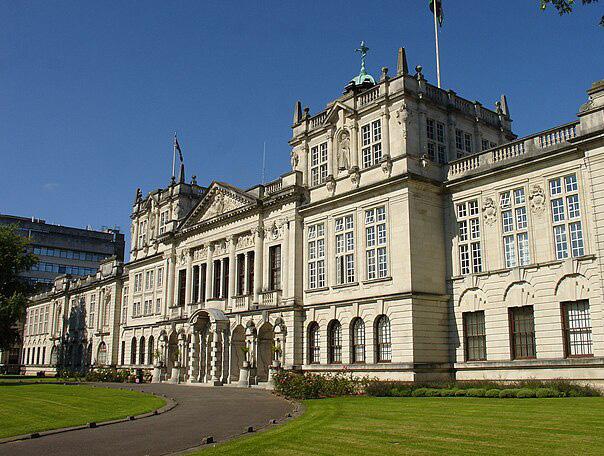
national students. The university offers many sporting opportunities with its high number of societies to join, and sports facilities across the city, offering a range of engaging activities for ALL students.
The rumour is true; Cardiff really has a niche for everyone and is certainly a place students are happy
residing in as the city is known for being one of the most active and exciting for both day and night life. Cardiff University has also been accredited for its role in the happiness of their students, with the university’s Student Union securing 2nd place throughout all other universities in the UK. Cardiff University’s Student Union plays a key role in maintaining student happiness and fulfilment when studying; it provides students with facilities to study, socialise and party while also giving them a safe place for support and advice during the perhaps trickier situations many may face at their time in university.
The Russel Group university not only maintained their top ranking, but they have also moved up four places in The Times’ national university list. Many, however, saw much disappointment with no Welsh universities being within the top 20 universities in the UK. Previously at 32nd in the UK, Cardiff are now securely in joint 28th position which is a still a massive achievement for the institution, securing a solid top 30 position. Cardiff is a place of pride and passion with many universities to match with Swansea coming as runner up in the Welsh University of the Year leaderboard among the other 7 that it shares the title of Welsh University with, one in particular continues to outshine year on year. Llongyfarchiadau, Prifysgoll Caerdydd!
Charlie Kirk (via Wikipedia Commons)
UCU Ballot For a New Strike Amongst University Staff
Alicia Tariq
News Editor
The University and College Union (UCU) are allegedly announcing for strikes next year against Cardiff University management to prevent staff redundancies in 2026. Gair Rhydd can confirm that the UCU are running a consultative ballot over issues on redundancies, workload, and the wellbeing of staff, with voting ending on Friday 3rd October, which has now surpassed. If voting is successful, the UCU will potentially move to a full official ballot to prevent job cuts next year, possibly causing strikes that could result in impacts across all cohorts.
Earlier this year, UCU planned to strike action and a ‘Marking and Assessment Boycott’ (MAB), but after an agreement was reached between the university management and UCU, the strikes were called off in May, and management agreed that there would be no compulsory redundancies for the remainder of 2025. However, it was announced on Friday 3rd October that a ballot of 68 colleges would strike over unfair pay and high-pressure workloads, as a result from the Association of Colleges’ recommendation of a 4 percent pay rise, which the UCU call “disappointing”. The ballot will run from 13th October to the 17th of November.
Cardiff’s consultative ballot on industrial action could call for Cardiff University’s academic staff to go forward with strikes. With 340 staff still in scope for redundancy, the University said it needs to lose another 50 staff by 2030. Cardiff UCU’s branch has called it “cruel and unnecessary”. The schools that are still under scope for redundancies are SOCSI, GEOPL, Music, MLANG and Share. “151 full time employees have been lost so far to Voluntary Redundancy as a result of the cuts, and many more previous to that in rounds of Voluntary Severance” says UCU spokesperson.
Gair Rhydd spoke to Cardiff UCU Media spokesperson, Andy Williams, who commented: “We’re currently consulting with our members on a new industrial action ballot around redundancies for 2026. As well as protecting jobs, our future industrial action mandate will also seek reassurances about: taking those remaining members out of scope;
skyrocketing workloads in the wake of the cuts; and the mental health and wellbeing of the overworked staff who remain. The restructuring exercises to university staff jobs means that trust has completely been destroyed.”While there could be an announcement on strikes and a boycott next year, there are concerns over whether this could cause exam disruption or missing results that many students feared in the 2022-2023 academic year. UCU have said “If members see no other option, and management don’t back down, the kinds of disruption we saw in 2023, and the kinds we almost saw in the summer of 2025, are regrettably a real possibility”. “As a union we’re committed to working with the University where we can, but compulsory redundancies are an absolute red line for our members,” said Andy Williams. An update from the UCU will be expected following the voting from members last week. The industrial action ballot will be decided by members in response to the University Executive Board’s decisions. The UCU may go forward with strikes if university management fails to stop redundancies, take out current staff in scope for redundancies for the 2026 academic year, and to keep the commitment made with the UCU in the summer to stop compulsory redundancies. Cardiff University has said it cannot rule out compulsory redundancies at the moment, and some members of staff could be vulnerable as almost. Students and staff should be prepared for big changes and possible issues and action happening next semester.
Responding to this article a Cardiff University spokesperson said: “Compulsory redundancies are always the last resort. Whilst they can never be completely ruled out, we will do everything possible to avoid them. We want to continue to work in partnership with our three recognised campus trade unions to prevent them. If UCU go ahead with industrial action, it will inevitably cause disruption for some of our students. As with previous periods of industrial action, we will do everything we can to minimise its impact. The University will remain open and in some areas teaching, research and services will be unaffected.”
Cardiff’s Campus in Kazakhstan Causes Controversy Online
Itis my view that we can deliver a Cardiff education programme in Kazakhstan that remains true to our values and, indeed, communicates these values to the students.”
A quote from Vice President Wendy Larner of Cardiff University in regard to the criticism targeted towards the campus that opened last month in Kazakhstan. But what are the criticisms and the concerns from the public and the UCU that represent the Cardiff University staff?
According to Transparency International, corruption under edu- cation is an unfortunate habit that occurs occasionally in Kazakhstan. Students are allegedly being able to pay bribes or obtain degrees through personal connections without having justified entitlement to them where nepotism culture is extremely toxic and is a significant problem in Kazakhstan, hence the controversy created due to Cardiff’s new campus opening.Due to information such as the prior point circling amongst online spaces, there has been an influx of criticism towards Cardiff University’s plan to establish a campus in the former Soviet Republic, criticism that has been raised with respect to the human rights record. Opening a campus in Kazakhstan does include concerns surrounding freedom of expression, political repression and civil liberties. For example, according to Amnesty International there are issues surrounding gender-based violence, LGBTQIA+ rights and freedom of expression which violates the human rights of students who are wishing to seek equal opportunities of learning, something the Welsh campus is a proud ambassador of. Some have asked, does the move juxtapose the beliefs the institution proudly holds?
public audits. Yet, the corruptive elements are still the focus amongst critics online. Occasionally, the governing bodies in Kazakhstan bring the numbers of corruption cases that they have discovered to light, while news reporters are commonly who cover these scandals that have been exposed, making the journalists vulnerable to sharing the information; again, becoming a target for concerns regarding free speech.
A statement from Prof Larner (Vice-Chancellor) and Mr Younge (Council Chair) of Cardiff University demonstrated that their goal to continue with the Kazakhstan campus highlights their wish to be part of global higher education by initiating quality degree programs in variety of countries.
The idea of international education is a new concept, and according to them, will allow the growth reputation of Cardiff University to grow worldwide and bring in a new form of income. Their aim is to create a global impact and allow new international education projects to soar, as they believe it will be a partnership that will benefit everyone.
If you have a story or tip off you want to share with us, use the QR to find our ‘Tell us’ form

Another area of criticism tends to come particularly after the announcement of cuts to existing courses at the University here in Wales, especially from the UCU who are currently planning to strike due to job losses and financial strain within the Wales Campus. This opens discu sions towards where the budget is being used and members of the public questioning its effectiveness. Some spectators online feel that Cardiff are acting ‘careless’ about the creative degrees that are homed here in Wales, arguing that they are often stepped on; due to the recent scandal regarding cutting degrees such as ‘mo ern languages’ amongst others, that were proposed to save a £30 million funding shortfall. Nevertheless, governments across Central Asia agree that enhancing the education system is vital for strengthening the economy. Kazakhstan, as well as other Central Asian countries have been tackling to decrease the corruption by punishing the people who are involved in such activities, hiring those who are qualified, applying stricter rules and
Despite public concern, the move went ahead, and the decision was approved by the university’s council in March 2025, and the new branch officially opened in Astana in September 2025. However, public criticism seems to be remaining rife against the University, but those higher up in the University remain tough and hopeful on the decision. Responding to this article a Cardiff University spokesperson said: “We know that there are several places where our values and Kazakhstan’s may not completely align. We know there are concerns about freedom of association and assembly, religion and belief, independence of the judiciary, rule of law, and labour rights. We have explored these issues as part of our due diligence process, taking advice from the many international actors who already have an established presence in Kazakhstan, and the UK embassy in Astana.
“We believe we can deliver a Cardiff education programme in Kazakhstan that remains true to our values and, indeed, communicate these values to the students. Academia is, after all, based on the free expression of ideas, even where those working together do not always agree. We know that education broadens perspectives and enables dialogue and the exchange of ideas. There is much we can learn from the Kazakhs, and they can also learn from us.
“Our efforts to develop TNE, not just in Kazakhstan, but in countries such as China, India, Malaysia, Singapore, and the United States, where we are also pursuing new opportunities, are integral to the stated ambitions of our strategy ‘Our Future, Together’, to develop reciprocal, mutually beneficial relationships that will allow us to work together across the globe.”
Kani Abdullah News Editor

The Aftermath of the Death of a Right-Wing Figurehead: Charlie Kirk A Divisive Figure in Modern Politics
Gabriella Hunt News Editor
The shooting of the American right-wing activist Charlie Kirk caused waves online following his death in Utah on the 10th of September 2025. Whilst attending an event at Utah Valley University, the podcast commentator and known influential ally of US President Donald Trump, was addressing a crowd of around 3,000 people when he was shot in the neck, moments after being questioned on his pro-gun stance and gun violence in America. Witness reports from those at the rally, as well as footage, placed the shooter on a nearby roof on the campus. The following day, 22-year-old Tyler Robinson was arrested as a suspect and placed into custody without bail. His attorney requested more time to review the evidence in the case before deciding whether his defence team will seek a preliminary hearing, which would determine if there were enough evidence against Robinson to face trial. He stands charged by Utah prosecutors with aggravated murder, who have stated plans to seek the death penalty if Robinson is found guilty. The next hearing is set for the 30th of October.
Through this, Kirk created a strong platform to represent the rise of far-right politics in America, where, through his use of platforms such as

YouTube, TikTok and Facebook, he used conversational statements to gain views and build an audience.
his controversial viewpoints, the act of violence as seen on the 10th of September is not justifiable and that gun violence in America needs strong regulations to avoid scenarios such as this from occurring. Tilly Middlehurst, a University of Cambridge student whose debate with Kirk went viral, issued an online statement that decreed that “political violence like this affects all of us ... This isn’t a step in the right direction. This isn’t fighting fascism. This is not what politics should look like.”
The death of Kirk elicited strong reactions online, with the political legacy that he has left behind a highly controversial topic. Known as a conservative and proud Christian activist, Charlie Kirk has an estimated $12 million net worth through his work with Turning Point USA - a youth-focused MAGA nonprofit - his real estate investments and the media and publishing of his show and multiple books at the time of his death.
Several left-wing influencers, including 21-year-old Dean Withers, known for his posts focused on current politics and famous debates with conservatives, including Kirk himself, have condemned gun violence following Kirk’s assassination. Wither’s post discussing the shooting described the act of violence, as well as similar incidents, as “disgusting, always vile and always abhorrent.” Many comments were made in the wake of Kirk’s death to stress that, regardless of
Ex-Wales Reform Politician Admits to Bribery Charges Linked to Russia
Nathan Gill, the former Reform UK leader in Wales, has admitted eight counts of bribery. His charges surround statements during his time as a member of the European Parliament for the Brexit Party, Reform UK’s predecessor.
The charges mention he “agreed to receive financial advantage, namely money” which was deemed as “improper performance” of someone in an elected office. Mr Gill, who hails from Anglesey, arranged an event with a pro-Russian politician and made pro-Russian remarks in the European Parliament. He also made similar statements in opinion pieces to TV channels which would “benefit Russia regarding events in Ukraine”, including the channel 112 Ukraine.
Two Ukrainians are related to this story, the first being Oleg Voloshyn, a former member of the Ukrainian Parliament, Voloshyn represented the pro-Russian “Opposition Platform” party. He was described by the US government as a “pawn” of the Russian secret service. The court heard that 112 Ukraine was related to Mr Voloshyn through his wife. Gill appeared on the channel but also arranged other MEPs to speak to the channel. Voloshyn also asked the ex-Reform leader to make specific statements on at least eight occasions in
return for cash.
The second is Viktor Medvedchuk. Alike Voloshyn, he is also a former pro-Russian politician who was
How is his death affecting the UK? His shooting has become a focus point in the continuous debate in Britain regarding free speech. On the 21st of September, US President Donald Trump recognised Kirk as the “greatest evangelist for American liberty” and called him a “martyr for American freedom,” and this sentiment has been echoed by UK-based far-right activist Tommy Robinson, who used Kirk’s legacy to help mobilise his “United the Kingdom march.” According to police, his rally saw twenty-six police officers injured as up to 150,000 people marched through the centre of London to protest their right to free speech, with the most common chants variations of “we want our country back.” However, this seems to mean contrasting things to those in attendance, with some participants there to protest illegal migration, some against migration in general, sharing the sentiment to “send them back”, and some attended simply to show their nationalist pride and belief in the right of free speech.
words in defence of Mr Medvedchuk as he faced prosecution for high treason.
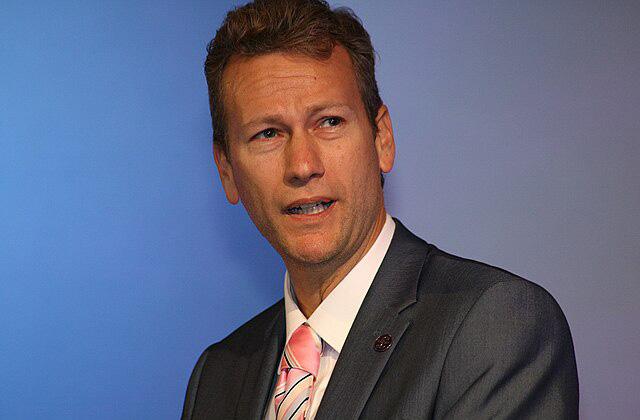
reportedly linked to 112 Ukraine. Medvedchuk is known to have close ties with Vladimir Putin – the Russian President is his daughter’s godfather. In one of the cases that Nathan Gill appeared on 112 Ukraine, he gave supportive
Much of the workings behind the charges were revealed from WhatsApp messages on Mr Gill’s phone after being stopped at Manchester Airport under counter-terrorism laws. The prosecutor, Mark Heywood KC, elaborated on how the messages showed an “agreement to receive money in connection with his performance in his duties as a member of the European Parliament”.
Nathan Gill has held many positions on the rightwing of UK politics throughout the 2010s. He was part of UKIP, then later Reform UK’s predecessor, the Brexit Party, of whom he was an MEP (Member of the European Parliament) for from 2014 until the UK left the EU in 2020. Within Wales, he was UKIP leader between 2016-2020 and held the role of Reform UK Wales leader for a stint between March and May in 2021.
With a by-election approaching in Caerphilly, opposing parties to Reform UK highlighted how the party’s candidate, Llŷr Powell, worked as a press officer in UKIP previously. Mr Powell worked for Nathan Gill up until December 2017. Welsh Labour questioned the relationship between Nathan Gill and the Reform UK
Kyle Bright Contributor
Charlie Kirk (via Wikipedia Commons)
Nathan Gill (via Wikipedia Commons)
City of Arcades: Cardiff Turns Seventy in Style
Olivia Griffin Contributor
Seventy might sound like an age for retirement, but Cardiff is proving otherwise. This autumn marks 70 years since the city was crowned the capital of Wales — and it’s celebrating with the kind of energy that would put a twenty-something to shame.
Enter City of Arcades: 70 Days of Events, a festival turning our Victorian and Edwardian arcades into a living, breathing playground of food, art, music, and more. Think of it as a city-wide birthday bash where everyone’s invited — yes, even students surviving on noodles and late-night library runs.
Five Fortnights, Five Flavours
Rather than cram everything into one weekend, Cardiff is stretching out the fun with five themed “fortnights”; each a chance to rediscover the arcades in a new light.
Foodie Fortnight (5–19 Sept)
Expect pop-up stalls, late-night bites, DJs and the all-important Foodie Night Market at Cardiff Market. Bao buns at midnight? Churros with a craft beer? Cheap eats that still feel like a treat? Students, this is your playground.
Discovery Fortnight (19 Sept–3 Oct)
Hidden gems get their moment. Explore the Castle Quarter Art Trail with bespoke shopfront murals, or try your hand at the Morgan Quarter’s “cash grabber” machine — yes, really, grab vouchers mid-air like you’re in a gameshow.
Arts & Music Fortnight (3–17 Oct)
Tied in with the Cardiff Music City Festival, the arcades will buzz with live sessions, popup galleries, and performances tucked into corners you probably walk past every day. Think of it as a spontaneous study break with bonus culture points.
History Fortnight (17 Oct–1 Nov)
Molly Spencer Spotlight Editor
Brunch and coffee just got upgraded in Cardiff. Haystack Café has opened its doors to a third this September, located on Cowbridge Road East, Canton. Just a short 20 minute walk from Bute Park, I found my way to Haystack Café in order to discover what the fuss is all about. Haystack already has two locations in South Wales, with its first opening in Swansea in 2018 followed by its opening in Merthyr Tydfil in 2024. As someone who has Welsh housemates, I had high expectations of Haystack and it did not disappoint. Since Haystack is newly opened, wait times can be up to an hour; however their online queuing system allows you lots of time to explore Canton (including the local Wetherspoons) and receive a text when your table is ready for pancakes or brunch. The café is split into two areas: an upstairs for dining, with the coffee and cakes downstairs. The café downstairs has a broad spectrum of options for coffee, hot chocolate and plenty of seasonal matcha drinks, including toasted marshmallow iced matcha and pumpkin pie iced matcha. Currently, the downstairs is being used for brunch seating, but once the opening rush
Step into a time warp with historical tours, spooky Time Traveller’s Trails and a reminder that these arcades have seen everything from coal barons to coffee culture.
Health & Beauty Fortnight (1–14 Nov)
Wind down with yoga, beauty pop-ups and a little self-care sprinkled among your retail therapy. Because what’s a birthday without a glow-up, right? Even uni students deserve a bit of zen between deadlines. Cardiff’s arcades are more than just Instagrammable backdrops. They’re the city’s signature: Victorian glass roofs, quirky shopfronts, independent traders and that thrill of stumbling into a secret passageway every time you turn a corner. Each arcade has its own vibe, from vintage charm to modern creativity — perfect for discovering that hidden café where flat whites are cheaper than campus coffee. If you’ve lived in Cardiff, you’ll know the arcades aren’t just pretty passageways: they’re part of the city’s heartbeat. Wander through Morgan Arcade and you’ll hear the soft scratch of vinyl from Spillers Records, the world’s oldest record shop. Duck into Castle Arcade and you’re met with the scent of coffee mingling with incense. Each arcade has its own rhythm: a blend of old-school charm and new-wave creativity that feels distinctly Cardiff. So here’s your challenge: pick a fortnight, grab your flatmates, and get lost in the arcades. Try something new (even if it’s swapping your usual supermarket instant coffee for a chai latte from a café you’ve never noticed before). Cardiff is turning 70, but this celebration proves the city is just getting started.
Cardiff
Gets Another Shot: Haystack Café Enters the Villa
is over the cafe will transform into a perfect social space and will be available for students to bring their laptops for a few hours of study. Haystack Café has free Wi-Fi available to use, making it an ideal location for some remote work, especially with the option of a few sweet treats. Of course the brunch menu had to be tested, as Haystack is famous for its pancakes. With various monthly specials, I opted for the classic USA pancakes with bacon, maple syrup and cinnamon butter, as well as trying their ‘tapastoast’ where you are able to choose two loaded toast flavours for £10.45, or three flavours for £14.95. With both sweet and savoury options available, there really is a range of offerings for everyone. And if pancakes aren’t to your fancy, other options are available, such as a full breakfast, brunch burger, or traditional toast with veggie and vegan alternatives available. Portions were generous and food was delicious; although there is no student discount available, students will find the prices worthwhile...
Whilst Cardiff may not need more coffee in its city, Haystack is providing a whole new mix of innovative flavours and creations to keep up to date with the changing of the seasons. Open from 9 until 3 daily, students can quench their
Sense and censorship- Victoria Starmer and her time as President of the Student’s Union
Eve Yates Spotlight Editor
While to many of us today, Victoria Starmer is the woman behind our current prime minister, she hasn’t always been hidden in the political shadows. During her time at Cardiff University in the 1990s, she often raised her voice and took strong stances for the welfare of her peers. However, her time as president wasn’t exactly smooth sailing, with issues surrounding censorship of Gair Rhydd casting a shadow over her time as president. Victoria Starmer, formally Victoria Alexander, became the student union president in 1994. She actively got involved in politics while studying law and sociology, campaigning against government cuts to student grants. Often addressing her peers regarding the cuts of these grants, she also discussed student hardships such as loans, safe sex practices, and budgeting. Alexander was described as a strong campaigner, who cared a lot about the student body and strived to make politics accessible to everyone. While Alexander was a great advocate and role model during her time as union president, it wasn’t all plain sailing. As the Gair Rhydd archives attest, during her time in post, her relationship with this publication was turbulent to say the least. Despite stating in an interview with Gair Rhydd “I don’t believe in censorship”, issues started to arise surrounding how freedom of speech was being impacted by executives and the president, with writers for the newspaper being excluded from meetings. During her tenure an investigation conducted Gair Rhydd stated that “the union was unfit to run its current facilities and should therefore not be given the opportunity to extend its influence”. Similarly, the then editor called out college officials for being “neither professional nor proper”. This was not the only time Gair Rhydd and Vicky Alexander didn’t see eye-to-eye. In the run up to the elections,
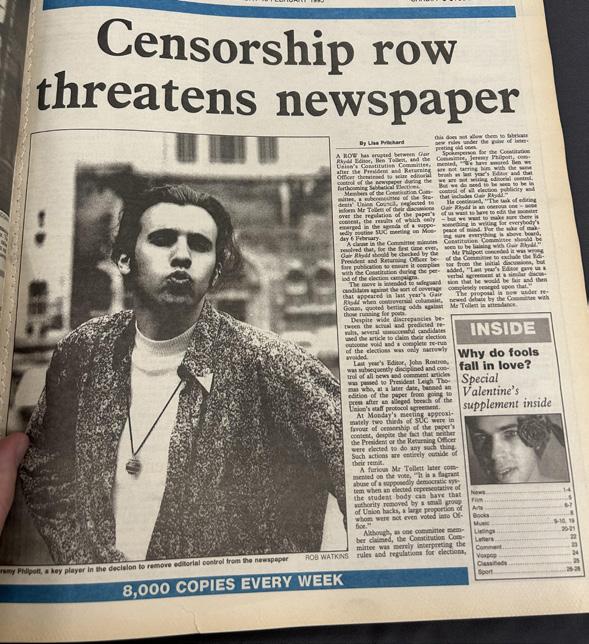
thirst for pancakes throughout the week and enjoy as their flavours turn festive in the coming months; the ideal excuse to escape the library and explore their cosy décor. Filled with mirrors, plates and mugs on the walls, and fairy lights, the area has a warm rustic charm making it the perfect place to get that sweet fix all students crave. Whether you are looking for a new brunch spot with friends, or a cosy study spot, Haystack Café Cardiff is a must-visit for students looking for their next coffee kick.
Alexander threatened to seize editorial control of the newspaper regarding all articles related to the elections. These regulations were not discussed with then editor Ben Tollet, and for the first time ever, Gair Rhydd’s content would be checked by the president and returning officer before publication to “compile with the constitution during the period of the election campaigns”. This move was aimed to combat incidents like the year prior when a writer quoted betting against those running for post. In light of this, two thirds of the SUC were in favour of censoring the paper, which Gair Rhydd argued was beyond Alexander’s authority. Gair Rhydd writers described Alexander and the committee as having their “own little private party”; which they alleged was impacting the writers on the paper. One writer regarding the president proofing all election related articles stated “it is a student newspaper, not a national daily. It is written by students, for students, not by the Exec”. Gair Rhydd weren’t silent and put up a fight, with an opinion piece stating “this is blatant censorship. A power kick for members of the executive”. Gair Rhydd frequently addressed the issue of how the union was run and the power this had over the paper: “Vicky Alexander... is that ‘President’ or ‘Big Brother?’” wrote one student in a letter to the editor. Gair Rhydd often called out the disorganised leadership of the union throughout Victoria’s time as president, such as addressing union executives not completing reports according to deadlines. Furthermore, Alexander was accused by Gair Rhydd as acting unconstitutionally when she proposed changes to the union without discussing these changes with the rest of the executives. In a Gair Rhydd investigation, a writer stated, “the union was unfit to run its current facilities and should therefore not be given the opportunity to extend its influence”. This alongside the other examples spotlight several issues regarding ceasing control from Alexander in her time as president. While Vicky Alexander strove for change and to better the university, it came at a cost to this newspaper, which has benefitted students for generations. The censorship of Gair Rhydd rocked the very foundations it was built on; to deliver free speech and accurate information to the student body. Despite Alexander’s achievements during her time as president, the relationship between the union member and Gair Rhydd became almost irreparable.
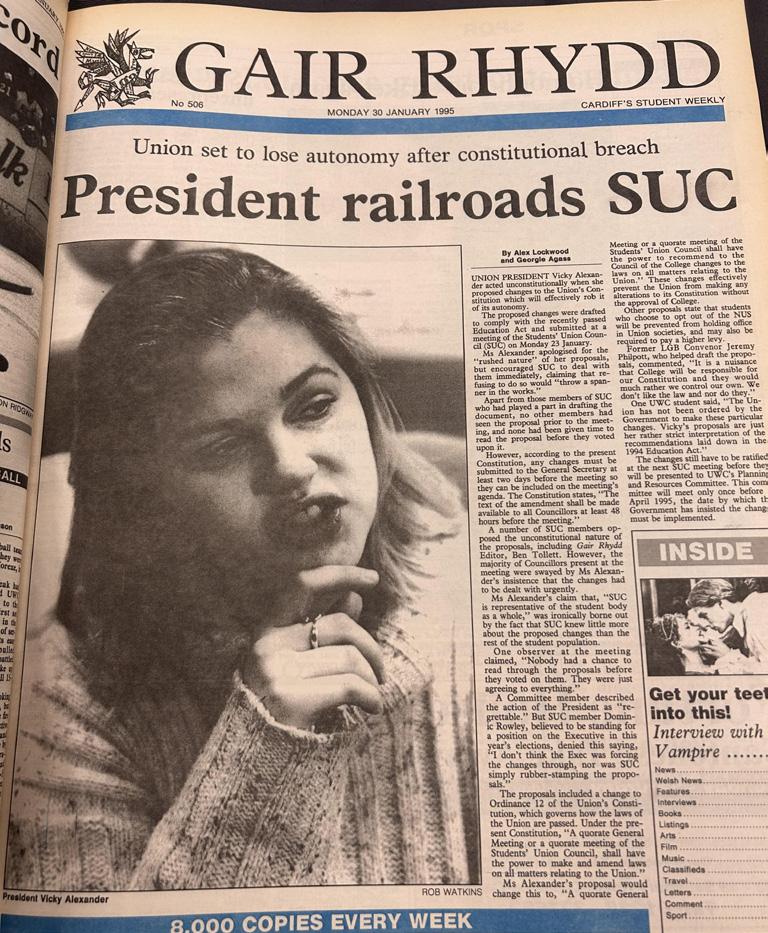
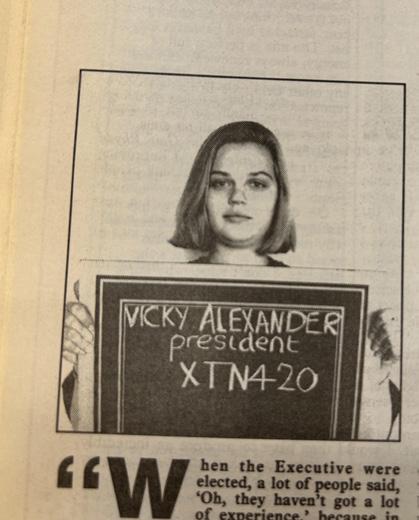

Relax in style: lush is bringing your new favourite steamy romance
Rachel Bedding Head of Spotlight
Freshers is over, and if you’ve participated in the yearly traditions of throwing your body through the ringer at Misfits, then now is the perfect time to take a break. With Lush Cardiff’s new redo, the store is back and in a better position than ever to offer some budget-friendly TLC to the city’s students. Spotlight was invited to experience their seasonal makeover for themselves; and, set with new autumnal scents and vibes, we can say this is the perfect thing to do instead of going to lectures. Lush is a very recognisable store in the UK beauty scene–its friendly staff and strong scents are almost as key to their label as their vegan and cruelty-free products. But in case you didn’t know, their policies extend beyond their ethical business practices: Lush have aided eight humanitarian causes this year, including ongoing support for the conflict in Gaza. They are very transparent about the aid they send, including donations and grants to causes. It's almost like all that isn't enough for them either–Lush haven’t produced a new plastic bottle since 2009. Describing themselves as “a company that strives to do good business
without exploiting people, planet or animals”, it’s hard to argue with that at face value. All of that is what Lush offers the rest of the world, but what can Lush offer you? Well, if you follow your nose and head down to Queen Street, above it all lies a peaceful oasis – the newly refurbished Lush Spa. As the only one in Wales, the spa offers a range of relaxation treatments, including full body massages and hot and cold stone treatments. Their new scheme, in which you can book a full-body tub for an hour is the perfect opportunity to reset. Your slot comes with choices of any Lush product to lather yourself in, and what you don’t use you can take home. But if you’re reading this and thinking your wallet is feeling a bit light after freshers, a range of free care options are also available at every store–from free head and hand massages to skin and hair consultations, they’re going to make sure you leave feeling pampered–just in time for a Halloween blowout. So, combine an afternoon of self-care, makeovers (and if you’re up to it, a bit of retail therapy), and head on down. Sounds lush, right?


Rising Sounds: Gene Gallagher Takes on Cardiff with LMS Support SUPPORT
Ellie Evans and Eve Harris Spotlight Editors
Cardiff University’s Live Music Society presented an exciting event at Clwb Ifor Bach on Tuesday night. The atmosphere certainly lived up to every claim from Gene Gallagher, frontman of the rock trio Villanelle, a band that has sold out their tour and supported Liam Gallagher’s 30th anniversary tour. Having only released one single, ‘Hinge’, which made its debut on the 10th of September, their family ties have already gained them significant attention. Born into pop and rock royalty, with Nicole Appleton (All Saints) as his mum and Liam Gallagher of Oasis as his dad, the lingering question of the night remained: could Gene, alongside bandmates Ben Taylor (guitar) and Jack Schiavo (bass), be able to forge their own mark on rock music? Or would he always be seen as just “Liam’s kid”.
“No one really knows any of our songs. Everyone’s just watching and working it out. They eventually all go crazy and let loose.”
We had the pleasure of speaking with Gene, Ben and Jack, who shared the hope that their set would leave the audience with their songs “ringing in their ears”. Headlining the gig in Clwb Ifor Bach proved to be an exciting moment for the band, as they highlighted the enjoyability of playing in more intimate venues, due to the dynamic energy of smaller stages, allowing them to interact with each other and the crowd more closely. They claimed that success for them is simply enjoying the music that they play, with Ben joking that his goal is to just ‘’get someone to unpack my guitar for me’’
As Villanelle began their set, it was clear that Gene’s musical style stands in sharp contrast to his dad’s. Leaning into heavier sounds, Vil-
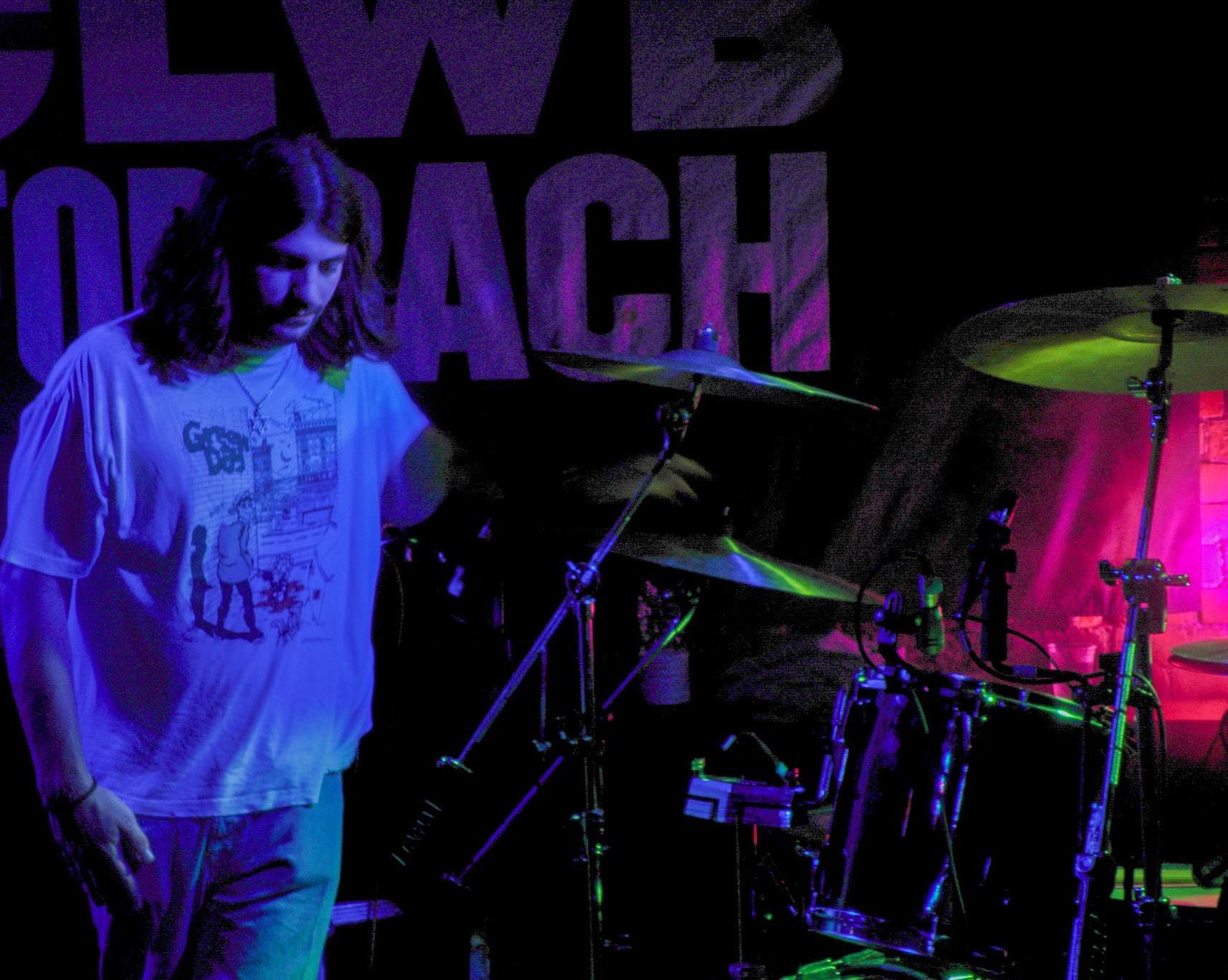
lanelle took inspiration from the shoegaze grunge scene, Taylor previously telling NME they “wanted to bring something back”, believing that there is a gap for heavier guitar music in the current scene. With gritty lyrics about ‘sleepless nights’, the band tap into an alternative rock, grunge spirit that feels new and fresh, each of the trio bringing their own unique sound to the band. Despite having only a single to their name, Villanelle proved their knack for captivating an audience with their unreleased material; Measly Means, Opportunity Arising, Natural Stereo, Lazy, Logos, and Pretty One - with some fans even knowing the lyrics, to our surprise. The band later told us that one fan even burned a CD of their unreleased music, desperate for more of Villanelle, “we’re not chasing an audience”, these fans are discovering Villanelle organically through these grassroot venues. Hinge is their most popular song of the night. As the opening chords of the distorted guitar commanded the audience’s attention, everyone came alive as the band launched into the first lyric: “Sat in the bathroom and with the flash of the lightning”.
Villanelle shared the stage with Florentenes, a similarly vibrant force, alongside support from two LMS student bands: Knitted Jumper and H & the band. Both student bands added greatly to the atmosphere of the night with each musician bringing a different vibe to create two thrilling indie rock sets, encouraging budding musicians to “just do it”. Particularly impressive were the vocals from Heera, lead singer of H & the Band. The individuality of each act’s music style came together to create a memorable night, reminding everyone of the importance of grassroots music venues for supporting emerging artists and bands, providing opportunities to share their music and reach new listeners.


Opinion 8 Too Much or Not Enough?
Government enforces porn age verification
Advait Vishnesh Gangawanwale Contributor
In July 2025, pornoholics in the UK woke up to the nightmare of their lifestyle. The government had implemented ID and selfie-based verification to access porn sites. Under new rules tied to the Online Safety Act, anyone accessing pornography must verify their age using a government ID or selfie-based scan. The government says this protects children from harmful material, but it marks a major shift in how personal and intimate data is collected and controlled. This raises an important question in the realms of internet
“The scale of this response feels disproportionate”
usage in the UK - is this too much?
According to Ofcom’s 2023 Online Nation report, about 14 million UK adults viewed online pornography that year which was roughly 29% of adult internet users, and only around 2% were under 18. A sweeping verification regime is now imposed on everyone to address the actions of a small minority. Protecting children is vital, but the scale of this response feels disproportionate. Each verification creates a record linking real identities to private viewing habits. Even if data is encrypted, it can still be breached or misused. Such leaks could expose people’s sexual preferences, while state or corporate misuse could lead to discrimination or blackmail.
Once this infrastructure exists, expanding its use for “security” or “public interest” or “national interest” becomes dangerously easy. Pornography is a convenient testing ground. Few will publicly defend it, allowing government and tech
firms to normalise digital ID checks without serious resistance. Today it’s porn; tomorrow it could be political or foreign news labelled “sensitive.” Requiring identification to access legal content sets a precedent that threatens free expression and online anonymity.
“Protecting minors should not mean treating every adult as a potential offender”
The debate is often framed as a choice between child safety and privacy. That’s false. Privacy-preserving verification already exists: independent age tokens, zero-knowledge proofs that confirm adulthood without identity disclosure, and strict deletion of verification data. These protect children and
adults without building permanent databases of personal preference. Perhaps, the UK can learn a thing or two from France in this context where they have used double-blind verification methods for giving access to porn. In this method, the verification agency and tool do not know and retain the data of the end user.
Protecting minors should not mean treating every adult as a potential offender. The government’s current approach risks creating a “database of targets” one that endangers privacy far more than it safeguards children. A proportionate policy would prioritise minimal data collection, independent oversight, and privacy-by-design technology. Otherwise, this small step toward digital safety could become a giant leap toward digital surveillance.

Is Hookup Culture Healthy for Freshers?
Bethan
Jones Contributor
Prior to university, the thought of engaging in hookup culture petrified me. Recently broken up with a long-term boyfriend, I had never taken part in a situationship, let alone a one-night stand. I couldn’t understand why anyone would want to engage in meaningless sex when a stable, long-term relationship was right there for the taking. But, that first week of freshers arrived and boy, did it hit me. Throughout university I have been sucked into the hedonistic lifestyle most of us students live by when parading campus; sleeping through lectures, day drinking at YOLO
“Casual promiscuity... is no new phenomenon”
on a Wednesday and of course, hookup culture. We are all too familiar with hookup culture at university. Whether it’s your own roster of situationships or your flatmates you can hear through the walls, casual sex is everywhere on campus. Some argue that this is a new side to university, but in my view, casual promiscuity has been around forever – it is no new phenomenon. Hookup culture is no more prevalent now than it
was in the 80s or 90s. The idea of dancing in a busy, sweaty club only to lock eyes with a random from across the dancefloor is the same old story your parents could be telling you from their own university experience. The only thing different is The Weeknd playing in the background rather than ABBA (un - less, of course,
acts almost like a test drive – it helps clarify feelings and gives a sense of whether the relationship has real potential. University, in particular, is a turbulent period of self-discovery, where identities and goals are constantly shifting and amid this change, hookup culture provides a space to explore sexuality freely, without the expecta-

you’re in Live Lounge). For many young people now- adays, sleeping together before making things official
Musicians Need to Stop Putting Business Before Creativity
Rhia Davies, Contributor
We’re living in an age of musical abundance. Listeners are now able to find any music they could ever want online, for free; gone are the days of having to pay £10 for an album you haven’t even heard yet. This hasn’t been great for industry profits. ing isn’t as profitable as physi cal music sales. Spotify pays art ists a fraction of a fraction of a penny per stream — only biggest artists can get a decent paycheque. This is why physi cal sales are still so im portant to the success of small and independent artists. The vi nyl record industry has been steadily growing for years now, and a large part of the initial demand was a desire to support these artists. Of course, major labels caught on to this interest and quickly took
“Swaths of superfans buy two, three versions of the same album”


As of the writing of article, Taylor Swift’s “The Life Showgirl” is currently on its sev variant. Swaths of superfans two, three versions of the album. Maybe they col all. Differences between tions are entirely cosmet itself is unchanged. There’s more than one of the records, the extras are gen erally kept as display pieces. What is in theory a music product is in reality a very expensive poster.
“Physical sales were meant to be the thing that allowed small artists to keep up”

“Students may still feel peer pressure to engage in certain activities”
tions and constraints of a committed relationship. Let’s face it, going back to a stranger’s house can be risky and many students may still feel peer pressure to engage in certain activities that push them beyond their comfort zones. STIs remain prevalent amongst young people and with a rise in pornography consumption, casual hookups aren’t necessarily appealing to all, and safety must always be the first priority. I’m not saying it’s for everyone, but we’ve spent too long shaming those for simply wanting a bit of fun every now and then. Why not embrace the fact that seeking pleasure is human, and if its consensual and safe, there’s no harm in a little curiosity, right?
Data: Sexual Health Trends in Wales (Annual Report 2024), NHS Wales.

The problem isn’t limited to Taylor Swift, it’s industry wide - there are currently nine versions of Billie Eilish’s newest album available on her website. Smaller artists are disadvantaged duction process itself. Vinyl production is costly and heavy; the artificially high ated by these seemingly nyl variations takes up that could’ve otherwise used by a smaller artist. ist putting in a smaller orrecords isn’t going to get priormajor label putting in an order for thousands. When you’re a smallting your vinyl manufactured comes with a waitlist that can be months long. High demands raise cost. If things continue in this direction, independ ent artists could be priced out of the vinyl market for good.

Physical sales were meant to be the thing that allowed small artists to keep up and make money in the streaming era. Now these too have been hacked bytics designed to direct at tention to major artists and make money for their labels. Next time you go to buy a record, shop independent first.
Barn

Hot Topic Of The Month


Are Cardiff University Suppressing Protests?
Sydney Sweeney’s Blue Genes I
Miriam Southall, Head of Opinion
Sydney Sweeney Has Great Jeans. ’ A marketing catastrophe, a severe crisis in management and widespread social outrage. Who could have predicted US fashion retailer American Eagle’s 5-word jean campaign would go down in advertising infamy? Well, clearly not the face of this campaign, Sydney Sweeney. Once a wellknown actress, she is now the Gen Z symbol of controversy and cancelled jeans. However, are they both the victims of this hypersensitive generation’s cancel culture, or does the advertisement truly display blatant ignorance and insensitive attitudes to the racist and sexist messaging being presented?
Welcome to Hot Topic of the Month, the latest addition to the Opinions Section. Here, we aim to delve into the biggest and most talked about and viral issues of the month, such as extreme controversy or an artist’s sudden breakthrough to stardom. For this article’s hot topic, I have chosen to explore this seemingly disastrous collaborative jean campaign. It is said that there’s no such thing as bad publicity. However, I think that the public reaction to these ads casts significant doubt on this notion. Let’s delve into the advert that led to these jeans being hated across the world.
Earlier this year on July 23rd, American Eagle launched its autumn campaign featuring Sweeney modelling their denim collection, promoted under the tagline ‘Sydney Sweeney has Great Jeans.’ The campaign focused on a wordplay between ‘genes’ and ‘jeans, with Sweeney stating, “Genes are passed down from parents... My jeans are blue.” However, the ad quickly attracted controversy, with critics claiming it promoted white-centric beauty ideals, associating ‘good genes’ were associated with whiteness, blondness, and thinness. The backlash soon spread on social media, with some calling the ad racist and sexist while others mocked Sweeney’s performance, including a parody by American rapper
Doja Cat. This controversy came on the heels of Sweeney’s earlier scandal involving ‘Sydney’s Bathwater Bliss’ soap, which many felt objectified women. As criticisms mounted, Sweeney faced accusations of over-sexualizing herself and reinforcing negative stereotypes.
However, despite the unending criticism, American Eagle refused to issue an apology, released the following statement on August 1st:
“‘Sydney Sweeney Has Great Jeans’ is and always was about the jeans. Her jeans. Her story. We’ll continue to celebrate how everyone wears their AE jeans with confidence,theirway.Greatjeanslookgoodoneveryone.”Once again, controversy rose as the company doubled down on their position, refused to even acknowledge the concerns and issues the advert promoted . Was this the end of this denim disaster débacle? Far from it! President Trump chimed into the discussion as he claimed Sweeney’s ad was “fantastic“ when a reporter informed him of her political leanings. “If Sydney Sweeney is a registered Republican, I think her ad is fantastic,” the commander-in-chief observed. These comments just gave more fuel to the backlash, with people now claiming the advertisement was also promoting right-wing standards on what a woman should be.
Despite the reaction seemingly being completely out of context and over the top, I believe there may be some grounds for concern here. The ad blatantly sexualizes Sweeney and the wordplay, whilst clever, does imply agreement with, and promotion of, historic beauty standards. This is something that women have worked hard to overcome. However, has such a furore over a pair of jeans actually achieved anything or helped anyone? Viral outrage aimed at issues supch as war, sickness or injustice, may have far more useful and important outcomes. Maybe we all online need to seriously consider why a jean advert done in bad taste has had us in such indignation that word even reached the president, but when true tragedy strikes, it’s brushed off as just another sad event of the world. Imagine the change we could make if we gave up focusing on celebrity drama and superficial mindsets and used the power to make events and matters go viral in the name of spreading love and awareness.
issues such as the course cuts and staff redundancies. Many staff and students alike were affected by the cuts in schools such as music, ancient history, and reli gion (including myself). In times of such uncertainty and outrage, surely, it’s understandable that we have a right to peacefully fight against what could be Cardiff’s end to an entire area of academia? The recent imple mentation of the injunction against unauthorised protest poses a threat to what should be our legal right.
“Placing all protests and strikes under one label of posing ‘distress or disruption’ sets a dan
seemed to be a closed course was reinstated following protests, and involvement from both the Welsh Government and the Royal College of Nursing. This is living proof that protest ing peacefully and raising an issue can have
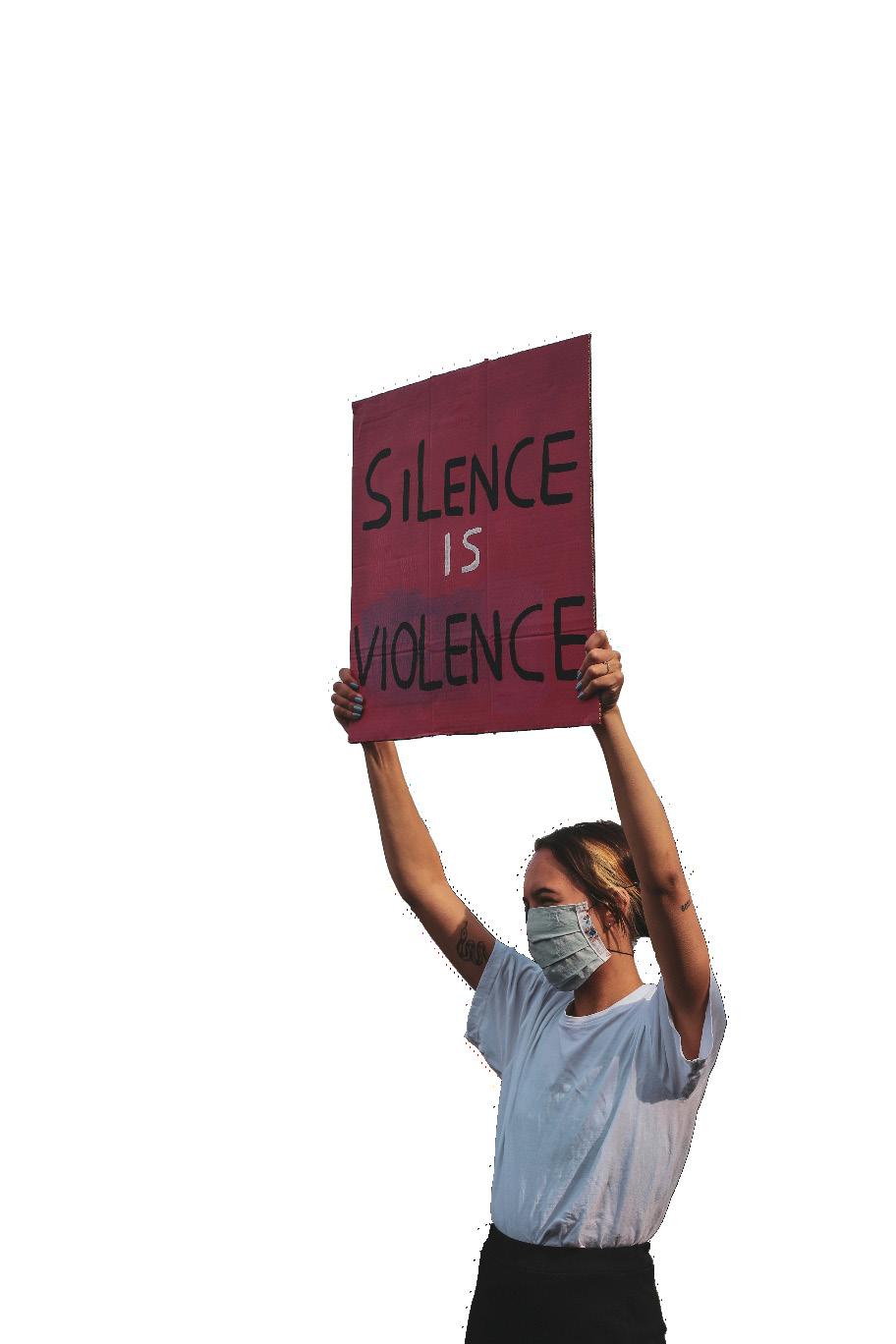
an impact and is essential to making important change. The fact that a university would put limitations on such a basic act is cause for concern. Events such as showing support for Palestine have also taken place on campus in peacefully protesting and setting up camp on the university grounds. Such instances were labelled as causing ‘distress and disruption’. Whilst issues and potential risks to the University’s safety that arise from individual occurrences should be dealt with, placing all protests and strikes under one label of posing ‘distress or disruption’ sets a dangerous narrative. Whilst the University are claiming the injunction was set in place to protect the campus and those on it, it very much can be seen as a suppression in our freedom of speech and our legal right to peaceful protest. It sets the questions of - who gets to decide what protests will or won’t be authorised? Do some causes get priority over others? I’d argue that these are valid concerns given the current social and political climate of our country, and recent news surrounding the University itself. Being at university has very much helped me grow enough to develop and express opinions, and it would be an absolute shame if such values were to be deterred in the community through preventative legislation.
Why Can’t Working-Class Politicians Get Away With Anything?
Oliver
Hanlon, Opinion Editor
Gone are the days of an honest politician, but in a world of populism and post-truth, many were left wondering ‘Was that it?’ when Angela Rayner resigned over an underpayment of stamp duty. For the record, I felt her resignation was correct, especially as Rayner was a minister overseeing housing; however, this is not the world we’ve lived in for the last fifteen years, lying has become accepted, and by no means is Rayner the first minister to underpay tax, so whatsets Rayner apart from her peers?: Her background. Rayner is an outlier of the political class as someone who has risen from the very bottom of society to the very top of government. There aren’t enough working-class women in parliament, let alone ministers. This made her mistake all the more painful, as Rayner had been able to project authenticity in her criticisms of austerity as someone who had come from the vulnerable, who would most be affected. Rayner was held to a higher standard due to her class, which was ultimately a classist double standard that has been following her throughout her political career. To illustrate this point, take the treatment of Farage for a similar issue, in which he claimed he had bought a house in his constituency when, in fact, his wife had instead. If Farage had bought the

“This is not the first time she has been a victim of this sort of prejudice”
house in question, he would’ve been due to pay an additional £44,000 in stamp duty. Farage and Reform co-leader Richard Tice have claimed that Farage’s tax affairs are irrelevant. This is where the classist double standard emerges. Why were Rayner’s tax affairs so intensely debated when Farage, the seemingly heir apparent to Downing Street, was able to brush any scrutiny of himself under the carpet? This leaves the sour taste of Rayner being targeted because of her background. This is not the first time she has been a victim of this sort of prejudice. In 2022, an anonymous Tory MP, through a newspaper, accused Rayner of deploying tactics from the film ‘Basic Instinct’ because she could not compete with Johnson’s ‘Oxford Union debating training’, illuminating a pattern of classist and sexist rhetoric towards Rayner from within the Commons and wider political reporting. This sends the message loud and clear to those from a working-class background in politics now or in future that a target will remain on their backs.
The Death of Free Speech Will Be Televised
Miriam Southall Head of Opinions
Free speech, a topic that today now comes under severe scrutiny and questioning. With a quick glance it would be easy to claim how the freedom to voice one’s own views is a common right that many individuals have. There is freedom to debate, outwardly disagree on politics, share religious values etc. After all, it seems this generation has an opinion on every single matter, and going online to express points of view on issues as diverse as ethical aspects of war to the deconstruction of song lyrics to establish how they could be offensive. Indeed, some would argue that this generation is too opinionated, complaining constantly and speaking out too much. However, if we dig beneath the surface, I believe there are many cracks and fears to be
“He never made light of Kirk’s death”
found in the idea of free speech. Recently, a number of events have made people more fearful to share their thoughts and views openly and widely. On the 17th of September this year, Jimmy Kimmel Live, the USA’s longest running late-night show was suspended and taken off the air by ABC and Disney. Many were initially shocked at this as it was not only one of ABC’s flagship shows, but it followed the announcement two months earlier of the cancellation of The Late Show with Stephen Colbert on the 17th of July. People thus began “connecting the dots” as to
why this action had been taken. A couple of days earlier, Kimmel monologue commented on the recent Charlie Kirk murder and Trump’s response. His view was that the MAGA movement was “desperately trying to characterize this kid who murdered Charlie Kirk as anything other than one of them” and accused them of “scoring political points” from the tragedy. He then went on to ridicule Trump’s response when asked how he was holding up after Kirk’s death, stat ing “He’s at the fourth stage of grief: con struction. This is how a four-year-old mourns a goldfish.” It was these comments that lead to the shows suspension with Andrew Alford, President of Nexstar’s broadcasting division, noting the comments were “offensive and insensitive.”

Kimmel was condemned by many for his seemingly insensitive comments and seen as making a joke out of a tragic death. However, I think it would be useful to take a closer look at what he actually said, without the glare of social media and people's biases exaggerating what was said. Although yes, it was arguably too soon to even mention anything related to the tragedy, we can see that he never made light of Kirk’s death. In reality, the focus of the monologue was the MAGA movement and Trump. Kimmel pointed out how MAGA were using Kirk's death to push an agenda and it was not liked by Trump supporters that Kimmel was calling out issues on the MAGA party. As such, did this warrant the show's immediate suspension? In my view, the main reason for the suspension were the comments directed at Trump himself. After all, it was after Colbert made comments on his
Trend or trauma?
Gen Z’s reaction to tragedy
Nancy Roberts Opinion Editor
Over the last month, the news has been hit with multiple horrific tragedies. At the beginning of September, I was in Lisbon when the famous Glória Funicular crashed, taking the lives of 16 people. With both locals and tourists commuting daily on the trams, the situation was surreal, and the usually vibrant city went into shock. The story made headlines globally, whilst friends and family from back home frantically messaged to see if we were okay. Grief washed over the city as people paid their respects.
It wasn’t long before the video of the crash had been posted and the disaster was turned into content. People dissecting the crash behind screens, conspiring on what had happened, accompanied by political commentary. I found it odd and insens tive to those who had only just lost their lives, and their families who were torn apart in an instant.
It was only a week later when the video of Charlie Kirk being shot circulated the internet. Within seconds, social media became a battleground of frenzied politics. The horror was weaponized, used to demonise the left. Whilst simultaneously people shamelessly posted their celebrations, detached comments and disturbingly,
show, calling a network settlement with Trump a “big, fat bribe” that his show was cancelled. The network claimed it was a “purely financial decision” though Trump chimed in saying “His talent was worse than his ratings”. Interestingly, when Trump was questioned about the suspension of Kimmel's show, he completely ignored the Charlie Kirk comments and claimed it was due to “No talent” and “No ratings”. As each episode typically has around 1.8 million viewers, it is hard to see how the ratings argument stands up. This Kimmel episode is just one of a number this year where someone has spoken up about their political views which resulted in severe consequences. Even though the axing of Kimmel’s show ended up being temporary and it is now airing again, it is still unsettling. What if this began happening more often, what if there were repercussions for anyone who made a critical comment about their leaders
“There may be a growing concern of legal action... just for speaking out on political

dark humour. Desensitization became a badge of honour, as people contested their gore tolerance.
Kirk was known to be a polarising figure, who advocated for ‘free speech’ but also had a lot of views that I personally do not agree with, and I believe many other people share that with me. I even found myself desensitised to the tragedy, detached from any emotional connection to this man. However, the video was gruesome and horrific, followed by memes within just one scroll. This is where we find ourselves in an era of disconnection. Social media platforms have fundamentally altered how Gen Z process and cope with tragedy. The immediacy of information means we’re e posed to global suffering constantly, yet the distance of our screens creates emotional numbness.
The question is not whether we’re desensitised (we know this already), but rather what we have lost in translation. When horrific tragedies become trending content and we are tallying up engagement, it disconnects us from humanity. How positive is this for Gen Z?As we slowly dive deeper into the age of technology, we risk forgetting the reality of those on the other side of the screen. There’s still space for these discussions surrounding social and political issues. I think it is important we talk about it and I believe Kirk’s death in particular sparked conversation. But where is the line drawn between dignity and
or a political party? This would hardly demonstrate a democratic society. Clearly, when it comes to the issue of free speech, we cannot ignore the brutal assassination of Charlie Kirk. Whatever you think about the views and ideals he espoused, there should be absolutely no excuse for political violence. Some people may have seen what happened and are now far more reluctant to speak out on political issues. Whether you're on the political right or left, you oughtn't be fearful that you'll be killed for speaking your views. It is because of events such as these that we could perhaps see the shrinking of freedom of speech. There may be a growing concern of legal action, suspension or even arrest just for speaking out on political issues. This, together with fear of violence could lead to people becoming increasingly reluctant to share and debate their views. It is also evident there is an extreme divide and growing hostility between the political right and left resulting in issues of free speech and entitlement to views. We can only hope a bridge begins to form between the two sides otherwise the fear of free speech may snowball beyond control and who
Freshers’ week unfiltered
Helen Turnbull, Opinion Editor
Freshers’ Week is a whirlwind of excitement, chaos, and nerves. I made some of my closest friends during this time, but there are definitely ups and downs. The first semester can feel overwhelming, so finding a balance is key!
It’s impossible to talk about Freshers’ without mentioning the Students’ Union. From icebreaker events to Wednesday night YOLO, it quickly became a key part of my university life. The Taf was my go-to comfort spot, with Friday half-price drinks, loaded fries, and hearty Sunday roasts—perfect for pre-drinks or a homesickness cure. Times spent at the SU have helped me feel that I belonged here in Cardiff.
The SU also hosts freshers’ fairs and society events. Joining a society shaped my experience; I found a lovely group of friends and enjoyed Wednesday socials. I found having mid-week social events to look forward to gave me a healthier work-life balance. I can’t recommend enough finding out what societies are out there, there’s over 200 societies so something for everyone!
Exploring local pubs is another rite of passage. The Woodville, or “Woody,” became my number one spot, with its affordable drinks and big outdoor area. If you’re in Taly-
bont, The North Star is also essential for quizzes, darts, or chilled pre-drinks. In my experience, establishing places you can meet up with your friends is a great way to get the hang of living in a new city.
Another part of settling into university is getting to know your flatmates. Some bond instantly, others don’t. But it’s not a race! I learned that friendships don’t have to form overnight. Taking your time to find the right people makes a huge difference.
There’s also the pressure of “the best week of your life” and endless nights out, which can be overwhelming. I enjoyed mixing evening activities with more relaxed, daytime plans: exploring Cardiff, shopping at St David’s, picnics in Bute Park, or coffee at Hoffi Coffee. Finding your own balance is essential; banish FOMO and do what makes you happy. Something less glamorous but universal is Freshers’ flu. By the end of the week, I found myself without a voice, so take the time to look after yourself. Self-care matters and burning out means you won’t enjoy your first semester.
In short, Freshers’ Week matters because it’s the foundation of university life: the friendships, the sense of place, and

Hydref Yng Nghaerdydd
Efa Jones Cyfrannwr
Gŵyl Dinas Gerdd Caerdydd
O’r 3ydd i 18fed o Hydref, bydd Caerdydd yn troi’n ganolfan gerddoriaeth fyw a bywiog wrth i’r ddinas groesawu Gŵyl Dinas Gerdd Caerdydd unwaith eto. Daw cerddorion at ei gilydd i greu profiadau unigryw a fydd yn ymestyn trwy ganol calon y ddinas hyd at ddŵr croyw Bae Caerdydd. Bydd yn gyfle gwych i gymdeithasu gyda ffrindiau a chael blas o dalentau’r sêr byd eang. Llais a Sŵn
Bydd gŵyl Llais yn cael ei chynnal fel rhan o Ŵyl Dinas Gerdd Caerdydd rhwng y 6ed a 12fed o Hydref, gyda rhaglen amrywiol sy’n cynnwys perfformiad unigryw gan Rufus Wainwright, yn ogystal â dychweliad yr eicon indie o Gymru, Cate Le Bon, sy’n cyflwyno albwm newydd. Bydd Adwaith hefyd yn perfformio dwy sioe arbennig er mwyn nodi deng mlynedd ers iddyn nhw ffurfio.
Yn dilyn hynny, bydd Gŵyl Sŵn yn cael ei chynnal rhwng 16eg a’r 18fed o Hydref. Ymhlith y prif enwau eleni mae Gruff Rhys, Sage Todz, Mykki Blanco, a nifer o artistiaid eraill. Mynd i gerdded Wrth i’r haf droi’n hydref yng Nghaerdydd, daw lliwiau newydd i’r ddinas. Mae’r dail amryliw yn dod â naws hudolus i Gaerdydd ac yn denu pobl allan i fwynhau’r tymor cyn i’r dail ddisgyn.
Parc Bute: Crwydrwch ar hyd lwybrau glan yr afon, mae’n fan perffaith ar gyfer mynd am dro heddychlon yn yr hydref, neu’n gyfle i sgwrsio gyda ffrindiau.
Parc y Rhath: Mwynhewch olygfeydd tawel y
llyn, ac ewch i weld yr ardd fotanegol liwgar sy’n arddangos blodau’r hydref - perffaith ar gyfer taith gerdded heddychlon yn yr hydref.
Bae Caerdydd: Gallwch fynd lawr i’r bae i weld machlud haul ysblennydd yr hydref ac i fwynhau’r awel braf ar eich wynebau.
Bwyd a diodydd Hydrefol
Bydd yr Hydref ddim yn gyflawn heb fwyd a diod gynnes, felly ewch am Latte ‘pumpkin spice’ neu siocled poeth mewn siopau coffi fel Rhostio, Maple and Bean neu Blŵm. Dyma’r ffordd berffaith i ymlacio ar ôl mynd am dro, neu gymryd seibiant o’ch llwyth gwaith. Mae tymor y diodydd oer drosodd, felly cynheswch gyda choffi poeth i’ch paratoi chi ar gyfer y diwrnod.
Marchnadoedd lleol
Mae hydref yng Nghaerdydd yn fwrlwm, gyda digonedd o ddigwyddiadau cymunedol sydd gan amlaf yn rhad ac am ddim i’w mynychu. Cynhelir
Marchnad Ffermwyr Caerdydd yn Riverside bob dydd Sul, gan gynnig cyfle gwych i flasu cynnyrch tymhorol, diwylliant lleol a chrefftau unigryw.
Pigo pwmpenni
Mae dewis pwmpen yn weithgaredd boblogaidd sy’n dod yn symbol clasurol o’r tymor hydrefol ac mae yna ddigon o lefydd yn agos at y ddinas sy’n cynnig y profiad yma. Mae Fferm Clearwell yn Michaelston-le-Pit, tua 25 munud o ganol
Caerdydd, yn cynnig y cyfle i chi bigo eich pwmpen ar benwythnosau Hydref, a thrwy gydol hanner tymor yr Hydref hefyd.
O Gymunedau Bach i’r Ddinas Fawr
Davies
Golygydd Taf-Od
Wrth i fwy o fyfyrwyr nesáu at ddiwedd eu cyfnod yn y brifysgol, daw cwestiynau anochel i’r arwyneb; a ddylwn aros yn y ddinas, neu ddychwelyd adref? I lawer, mae’r penderfyniad rhwng y ddau yn un sy’n galw am feddwl dwfn.
Mae bywyd mewn cymuned fach yn wahanol iawn i sŵn a phrysurdeb y ddinas fawr. O’r cyfarchion dyddiol ar y stryd, piciad cloi i’r siop leol, i sgwrs sydyn gyda chymdogion. Nid oes chwaith angen egluro pwy wyt ti, gan fod pawb yn adnabod pawb. Dyma gymuned glòs ar ei orau.
Ond ai dyma wir adlewyrchiad cymunedau bach heddiw?
Yn naturiol, mae gadael y cartref yn ehangu gorwelion. Mae’r ddinas yn cynnig rhywbeth na all llawer o gymunedau bach eu cynnig; dewis, amrywiaeth ac uchelgais. Ac wedi graddio, mae’n rhaid i nifer o fyfyrwyr wneud y penderfyniad o aros neu ddychwelyd adref.
Mae Heledd Roberts, sy’n dod o Lanerfyl yng Nghanolbarth Cymru, yn rhannu ei phrofiad o’r trawsnewid yma wrth symud i Gaerdydd. Wedi tyfu i fyny mewn cymuned glòs a Chymraeg ei hiaith, lle’r oedd pawb yn adnabod ei gilydd.
“Roedd e’n dawel iawn, dim llawer o bobl, ond 30 oedd yn fy ysgol gynradd, sydd bellach wedi cau”, meddai.
Er bod symud i’r brifddinas yn sioc ddiwylliannol, y pellter oedd y newid mwyaf iddi. “Y sioc fwyaf oedd bod popeth mor agos, mae popeth o fewn pellter cerdded”, eglura hi.
I Heledd, mae’r cyfleoedd sy’n bodoli yn y ddinas yn rhywbeth anodd eu hanwybyddu. Am y tro, nid yw hi’n gweld ei hun yn dychwelyd i Lanerfyl.
“Byddai angen mwy o swyddi Cymraeg a
Myfyrwyr y Brifysgol yn Rhedeg Hanner Marathon Caerdydd
Ar ddydd Sul, y 5ed o Hydref, cynhaliwyd Hanner Marathon Caerdydd. Dyma un o brif uchafbwyntiau calendr rhedeg Prydain gyda miloedd yn cymryd rhan yn flynyddol. Roedd bwrlwm i’w deimlo yn y brifddinas, wrth i dros
27,500 o redwyr lenwi’r strydoedd, gan dorri record unwaith eto. Ymhlith y miloedd, roedd Beca Roberts, myfyrwraig trydedd flwyddyn. Mae Beca wedi bod yn rhedeg ers blynyddoedd, ond dyma’r tro cyntaf iddi wynebu hanner marathon.
“Roeddwn i’n chwilio am her,” eglurodd hi.
“Nes i rili fwynhau o - y gefnogaeth ar hyd y ffordd oedd un o’r uchafbwyntiau.” Yn wahanol, roedd Eben Williams, myfyriwr ail flwyddyn, eisoes wedi profi Hanner Marathon Gaer ac felly’n gwybod beth oedd o’i flaen. “Nes i enjoio’r 200 metr olaf. Ti’n gwybod bod ti bron yna, mae’r teimlad yn grêt.” Roedd Begw Williams, myfyrwraig trydedd flwyddyn, hefyd yn gyfarwydd â’r ras.
“Dyma’r ail dro i mi gymryd rhan. Mae’r awyrgylch yn gwneud y ras i fi. Mae ‘na buzz amlwg ar y strydoedd, dyna’r prif reswm o’n i isio gneud o eto.” Rhedeg i Eraill Nid hunan-her yn unig oedd y ras i Erin Davies, myfyrwraig trydedd flwyddyn. “Rhedais i dros Ymchwil Canser Cymru, er cof am dad-cu,” meddai. “Fe gollais i dad-cu ‘chydig cyn y Nadolig llynedd, felly roedd hi’n ras emosiynol iawn.”
Roedd Swyn Dafydd myfyrwraig ail flwyddyn yn rhedeg i elusen Mind. “Nes i redeg ‘leni i godi arian i elusen Mind,” meddai.
Echyfleoedd i bobl ifanc i mi allu dychwelyd”.
Mae Aron Jones, myfyriwr o Lasfryn ger Cerrigydrudion, hefyd wedi profi’r trawsnewid o bentref bach i ddinas. Cafodd ei fagu mewn ardal “ddiogel, tawel a chymunedol iawn” ac mae’n teimlo’n lwcus iawn am y profiad hwnnw.
I Aron, un o fanteision mwyaf byw mewn cymuned fach oedd y teimlad o berthyn. “Y teimlad o nabod pawb a bod wastad rhywun yna i helpu,”
“Cefais fy magu gyda’r gymuned o’m cwmpas, yn mynd i’r capel, y clwb pêl-droed, [chwarae] rygbi’n lleol, a digwyddiadau bach y pentref.”
Fodd bynnag, roedd symud i’r ddinas yn newid byd.
“Mae mwy o bethau i’w gwneud, mwy o le i fod yn annibynnol, a chymaint o gyfleoedd newydd.”
Er ei fod bellach yn byw mewn amgylchedd llawer mwy, mae’n dal i brofi ymdeimlad o berthyn. “Mae’n hawdd teimlo’n rhan o gymuned fechan o fewn y brifysgol, sy’n helpu i wneud y ddinas teimlo’n gartrefol.”
Wrth edrych tua’r dyfodol, mae Aron yn gobeithio dychwelyd adref. “Byddwn i’n licio dychwelyd rywbryd, mae’r cysylltiad gyda’r ardal yn gryf iawn, ond am rŵan mae’r cyfleoedd proffesiynol a phersonol yn y ddinas yn apelio mwy”.
Mae profiadau’r ddau yn adlewyrchu realiti llawer o bobl ifanc sy’n gadael eu cymunedau bach i geisio dyfodol mewn dinas. Mae’r dewis rhwng y cysylltiad agos o fewn cymunedau bach a’r cyfleoedd sy’n bodoli mewn dinas, yn parhau i fod yn un anodd i lawer.
Dyma elusen sy’n agos at ei chalon, “yn gefnogol i fi a fy nheulu pan oeddwn i’n sâl ag anhwylder bwyta.”
Disgrifia hi’r profiad o redeg fel un “amesing a phoenus,”
“Roedd gweld y crowd a phawb yn cefnogi ei gilydd yn rhywbeth bythgofiadwy!”
Ail-ddychmygu’r Ddinas
Fel arfer, mae Parc y Rhath a’r Bae yn llefydd i ymlacio dros y penwythnos. Ond ar ddiwrnod y ras, fe drawsnewidiwyd y ddinas yn drac, wedi’i amgylchynu gan filoedd o gefnogwyr. “Dw i wedi rhedeg drwy’r Rhath gannoedd o weithiau o’r blaen,” meddai Beca. “Ond mae rhedeg drwyddo gyda’r holl gefnogaeth yn brofiad hollol wahanol.” Wedi’r Llinell Derfyn Roedd dathliadau’n dilyn drwy’r prynhawn; rhai’n ymlacio ar y soffa, tra bod eraill yn lleihau eu syched â pheint. Roedd llwyfannau cymdeithasol hefyd yn llawn hunluniau wrth y llinell derfyn a sgrinluniau o ystadegau Strava. “Roedd o’n un o’r pethe anoddaf dw i wedi gwneud,” ychwanegodd Erin. “Ond byswn i’n ei wneud o eto, roedd y teimlad o’i gwblhau yn anhygoel!” I’r myfyrwyr hyn, roedd yr Hanner Marathon yn fwy na ras. Roedd hi’n gyfle i herio’u hunain, i godi arian ac i brofi’r ddinas maent yn byw ynddi mewn ffordd gwbl newydd.
Patagonia: Profiad Dwy Fyfyrwraig
leni, derbyniodd deg myfyriwr o Ysgol y Gymraeg ysgoloriaeth i dreulio cyfnod dros yr haf yng nghymuned Gymraeg y Wladfa. Dyma brofiadau dwy ohonom o dîm TafOd, a oedd yn ddigon ffodus i fod ymhlith y deg!
Mae’r syniad o gymuned Gymraeg mewn gwlad mor bell â’r Ariannin wastad wedi sbarduno diddordeb ynof, ac rydw i’n hynod ddiolchgar fy mod i wedi cael y cyfle i’w phrofi dros fy hunan. Heb os, dyma un o’r pethau gorau i mi eu gwneud! Treuliom ni bythefnos cyntaf y daith yn ardal Dyffryn Camwy, lle buom yn brysur yn mynychu gweithgareddau amrywiol yn y Gaiman, Trelew, Dolavon, Rawson a Phorth Madryn. Wrth gyrraedd, roedd y gwahaniaethau i gymharu â Chymru yn amlwg; y tirlun, y bensaernïaeth a Sbaeneg fel prif iaith. Eto i gyd, roeddem ni’n teimlo’n gartrefol yn syth, a hynny am fod y Gymraeg yno, yn fyw ac yn ffynnu. Profiad swrrealaidd oedd gweld baneri Cymru ochr yn ochr â baneri’r Ariannin ym mhob cwr o’r trefi hyn. Heb sôn am yr enwau Cymraeg ar siopau, tai te, a chlwb rygbi’r Ddraig Goch! Hawdd iawn oedd anghofio ein bod ni hanner ffordd ar draws y byd!
Davies Golygydd Taf-Od
Pythefnos brysur ond bythgofiadwy! Cyn pen dim, daeth hi’n bryd i’r tair ohonon ni deithio i Gwm Hyfryd – ardal hardd, fynyddig, ar ochr arall y paith. Cawson ni groeso cynnes iawn gan drigolion Trevelin, y dref lle wnaethon ni aros, ar unwaith, gan ein galluogi i ymgartrefu yno cyn gynted ag y gwnaethon ni yn y Dyffryn.
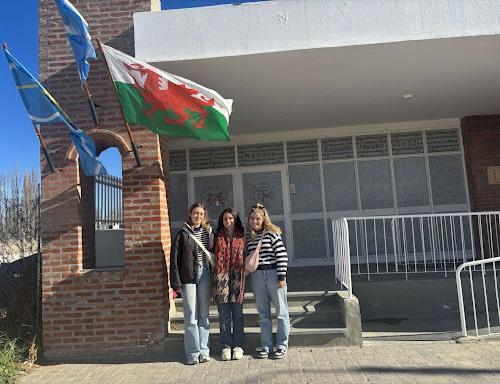
Roedd ein cyfnod yn y Dyffryn wedi’i lenwi gydag ymweliadau ysgolion, gwersi oedolion, clybiau sgwrsio, a gweithgareddau allgyrsiol megis canu mewn côr a dawnsio gwerin. Roedd agwedd y bobl tuag at y Gymraeg yn hynod galonogol, a mwynheais bob sgwrs am hanesion unigolion a’u rhesymau dros siarad neu ddysgu’r iaith. Braf iawn oedd gweld diwylliant Cymreig ar ei orau mewn ymarferion ar gyfer Eisteddfod y Bobl Ifanc, â’r cystadlaethau Cymraeg a Sbaeneg yn cynnig cyfle euraidd i bobl leol ddathlu bob elfen o’u hunaniaeth. Braint hefyd oedd i mi gael perfformio dawns clocsio mewn cynhadledd ar gyfer yr Eisteddfod, wrth i’r dref baratoi ar gyfer y digwyddiad pwysig.
Treulion ni’r rhan fwyaf o’n dyddiau yn Ysgol y Cwm, lle buon ni’n cynnal gweithgareddau amrywiol i’r disgyblion. Profiad hollol swrrealaidd oedd clywed plant yn siarad Cymraeg ac yn canu caneuon Cyw ar ochr arall y byd! Yn ogystal â mynd i’r ysgol, cawson ni hefyd fynychu gwersi oedolion yn y dref gyfagos Esquel, ac ambell wers ddawnsio gwerin. Rhaid cyfaddef, roedd y gwersi dawnsio gwerin yn destun cywilydd i ni’n tair, am i’r Archentwyr allu dawnsio yn well o lawer na ni! Buon ni’n ffodus iawn i gael rhywfaint o amser rhydd yn ystod y prynhawniau a’r penwythnosau yn y Cwm. Gwnaethon ni fanteisio ar y cyfle i ymweld â rhai o’r atyniadau twristaidd cyfagos, gan gynnwys mynd am dro o amgylch Llyn Brychan, Nant y Fall, a Pharc Cenedlaethol Los Alerces. Fy hoff weithgaredd i oedd teithio ar drên La Trochita i ymweld â phentref Brodorion yr ardal – profiad cwbl unigryw, gyda golygfeydd hollol syfrdanol! Yn wir, roedd ein cyfnod ni yng Nghwm Hyfryd yn hollol hyfryd! Gwnaeth y bythefnos hedfan heibio, ac ym mhen dim roedd hi’n amser hedfan yn ôl i Gymru fach i adrodd yr hanes i’n teuluoedd a’n ffrindiau adref.
Erin
Lili Ray Cyfrannwr
Hannah Williams Pennaeth Taf-Od
Gwenno
GAIR RHYDD MEETS
James Roberts Editor in Chief
Could you introduce yourself?
I’m Maria Pollard and I’m Students’ Union President here at Cardiff Students’ Union
What did you study?
I did my undergraduate degree in politics, I wrote my dissertation on the far-right populism in Germany and how they talk about women and LGBT people, pitting minority groups against each other. I enjoyed my degree alot.
You came into the role last year after an election which had unprecedented levels of engagement. Despite that, I think many people will be unsure as to the nature of your role. Could you outline for us the responsibilities which you have as SU president?
So it’s quite a broad role. I have a role in the Students’ Union itself and also a role in the university. As president, I oversee the political direction of the Students’ Union, although there’s a fairly level hierachy between me and the other sabbatical officers. So everyone has a big say and a lot of influence over the whole direction, but I am the main spokesperson for the Union.
Another part of how I set the political direction means that I oversee the campaigns that the Union runs. This year you’ll see stuff from me about housing in October. We’re going to have a housing fortnight to get people in to talk about student housing, exploitative landlords, how to advocate for yourself, how to make sure that you’re signing a good contract, and advertising the resources that our student advice service offers, because I think they’re quite underutilised. Then I’m also going to be doing stuff about the Senedd election.
Then there’s the external political element to my role. For example, Cardiff Council is currently trying to limit parking permits for students, so I’m doing some work externally lobbying politicans on that and other student issues.
I’m also the chair of the board of trustees of the Union. A lot of people don’t realise how massive the Union is. Obviously, we’re a charity, and student interests and advocating for students is at the heart of everything we do, but we do also have quite a big commercial side, so I’m also on the board of a large business. This involves maintenance of the building and stuff like YOLO and the Taf, as well as sales. While at the end of the day I don’t decide on those things, the other officers and I do have influence as members of the
“I think it’s not going to be an easy year to be at Cardiff University. There’s a lot of change in the works and not all of it is going to be comfortable.”
board and we have a lot of say over how stuff is driven. Some of the time it’s difficult because the Students’ Union needs to make money to do its student resources, to run campaigns, and provide student advice.
Do you think that at times there is a tension between the Union being a commercial body and a body that represents students?
There are obviously some conflicts; for example, balancing YOLO and nightlife with student welfare, particularly if there is a perception that we are perpetuating student drinking culture. But we are trying to provide more opportunities for students who don’t drink to participate in social events, while also making sure students who do drink are able to do it in a safe way. This Freshers’, the officers and SU really made an effort to provide more non-alcohol-centred events. Then also a huge amount of work has been put into student safety at our club events. But some people look at the SU and they reduce it to just being YOLO, like it’s “YOLO, nothing else” or it’s “why does the Students’ Union focus on YOLO?”, but I think you have to look at all of it quite holistically. We have this commercial side, so that we can run all these student services, and a lot of students’ unions don’t have the commercial side that we do. While we do get a block grant from the uni every year, we are able to supplement it with other stuff. If we were just reliant on the university, particularly in the current financial crisis, it would be very difficult for us to operate — we’re one of the biggest students’ unions in the country, the buildings are massive even compared to other big Russell group universities.
So do you think that the commercial side of the Union helps protect its independence?
Yes, I think that we would potentially have to watch ourselves a bit more if we weren’t.
Have you had much contact from the university since you took the role?
Yes, now I have. It’s taken a little while. The summer is quite a weird time to start the role because a lot of the university staff, particularly those with children, tend to take quite a lot of annual leave. So you’re coming into this job and then everybody’s going away. I will say that it took a while for Wendy to meet with me. I only met her last week. I did meet her at my induction with my predecessor, but the first time we had a one-to-one was last week. We should be meeting monthly from now on. I’ve had quite a lot of contact with the pro vicechancellor for education, particularly on quite relevant issues at the moment, like timetabling.
I’m students’ lead representative when it comes to the university. I’m in a lot of committees and working groups, ranging from very high-level stuff like the university council, which is the main governing body with two Students’ Union reps on it, all the way down to smaller working groups on other issues like the student app or violence against women and girls, sexual violence, disability, and Black History Month. So while contact from the university hasn’t been at the level that I would have wanted it to be, it is now improving. I will give them credit for that. There was a bit of disengagement over the summer, and I am hoping I have given feedback so it won’t happen again, but we will see.
And, obviously, one of the developments over the summer was the injunction; have you had many meetings regarding the injunction and does the Students’ Union itself have a view on the injunction?
Well, the Students’ Union put up a statement
when the injunction first came out. It was an awkward timing because it came out right at the end of the previous team’s term. I’m sure that you can understand that the first month of my job was a lot of induction. Personally, I don’t like the injunction, I think that students have a right to protest, and I think that protest isn’t comfortable; the suffragettes weren’t peaceful. There is obviously a safety side to it, and, at the end of the day, students need to feel safe and have easy access to their lectures, but also I think in the current political climate cracking down on protests is not good. Sadly, it has gone through the courts. It isn’t the sort of thing where you can step in and reverse it.
I have been in meetings with the university’s legal compliance team to give me guidance on how and where students can protest, so we can relay this to students. I’m hoping that I'll have information about this soon, so that I can share because it think it’s vital that students are able to protest on campus and I think it’s a shame — something I don’t agree with at all. The university says it’s for safety purposes. I can understand a lot of their arguments when I’m in meetings with them. But I think fundamentally that freedom of speech in universities is vital and I’m hoping there’ll be information letting students know that they can protest and that they need to be careful about how they do it.

MARIA
POLLARD
“I think having to get approval to do a protest is stupid.”
excited to try and get students engaged on political issues that affect them.
In terms of events, there’s always stuff in the works. I’m hoping that I will get student dis-
And, finally, have you got any plans to fix the YOLO queue?
I came into this role and I was like “I'm going to be the one who does it!” The problem is everybody wants to come to YOLO and YOLO is only so big. And when you say “we want to have a full building”, if you have a full building and there aren’t headsets, nobody goes into the other room. If you have a full building and there are headsets, everybody wants to go into the silent disco. There’s a level of conditioning of behaviour that’s difficult to overcome — there has to be a lot of cultural change. I think YOLO is such an institution at Cardiff that it might be very difficult to change some of these behaviours. For example, coming early, staying in Y Plas when the silent disco is on, or going to the Great Hall when there’s no silent disco, and, by God, they are trying! Effort is being made — oh,
please e-mail me. YOLO is like two nights in one, you have people who comes from seven o’clock until midnight and people who come from midnight until three.
Yes, and we all know which one we are! Any final comments?
This is a big year for you guys, I’m excited to see what you come up with.
From your experience in meetings with the university, would you say they have a good understanding of student feeling on those issues or do you think that there needs to be more engagement between the university and the student body?
I think they do. A lot of them are very well meaning, they don’t want to do it — the people I speak to don’t want that to be the case. There’s a feeling that it had to happen after the encampment and the occupation from a security point of view. They mention the amount of money they spent on security. Do I know enough about the intricacies of providing security? No. I think they are keen to communicate with students that protests can happen. We’ve been having discussions about what that looks like, but I think having to get approval to do a protest is stupid.
Is there anything that we should be looking forward to this year, anything that you can hint at?
I think it’s an exciting year for the Students’ Union. I think it’s not going to be an easy year to be at Cardiff University. There’s a lot of change in the works, and not all of it is going to be comfortable, but I do think we are in a position as a students’ union to shape what the future of Cardiff University is going to look like. I also think politically it’s a big year — we’ve got elections coming up. Stu dents aren’t a demographic who tend to vote, but I think this is going to be a very exciting Senedd election in that it’s probably going to shake stuff up in a way that has never hap pened since the Senedd has existed. I'm really

Betsan Griffiths
Cyfrannwr
Gall cychwyn y brifysgol fod yn siwrnai emosiynol, unig a straenus ar adegau. Ond bydd fy ngair o gyngor yn sicrhau profiad bythgofiadwy i chi fel myfyriwr yn y flwyddyn gyntaf. Ffrindiau yw un o’r prif ffactorau ar gyfer cael bywyd pleserus yn y brifysgol, felly mae hi’n bwysig eich bod yn dod o hyd i’ch criw. Mae gan Brifysgol Caerdydd dros 200 o gymdeithasau o bob lliw a llun sydd yn gweddu at ddiddordeb pawb. Gallwch ymuno drwy ymweld â gwefan Undeb Myfyrwyr Prifysgol Caerdydd neu eu tudalennau ar y cyfryngau cymdeithasol. Cofiwch, nid yw pwy yr ydych yn byw gydag yn y flwyddyn gyntaf yn diffinio eich cyfnod yn y brifysgol; mae hi’n bwysig cael ffrindiau tu hwnt i’ch fflat/tŷ ac eich cwrs er mwyn cael cydbwysedd iach. Cadw meddwl iach yw’r flaenoriaeth ar gyfer myfyrwyr newydd. Mae hi’n allweddol cymryd egwyl. Peidiwch â theimlo o dan bwysau i fynd allan yn wythnosol, mae hi’n dderbyniol i gael noson fewn. Blaenoriaethwch eich hunain dros ddigwyddiadau a phobl eraill. Peidiwch â bod ofn bod yn annibynnol, nid oes cywilydd i wneud gweithgareddau ar ben eich hunain. Mae hynny yn gwbl naturiol!
Trowch eich ystafell wely yn rhywle clyd, cartrefol a chynnes, er mwyn cael llecyn
i ymdawelu ynddo. Rhowch luniau o’ch ffrindiau a’ch teulu neu addurniadau o’ch ‘stafell adref. Mae hyn yn gwneud byd o les, yn enwedig pan rydych yn hiraethu am adref.
Gan amlaf, arian yw’r poen meddwl mwyaf. Er bod gennych eich cyllid myfyriwr tymhorol, gall arian wrth gefn wneud byd o wahaniaeth. Gwnewch eich gwaith ymchwilmae sawl sefydliad yn cynnig grantiau ar gyfer myfyrwyr megis cynghorau lleol, y Brifysgol, y Coleg Cymraeg a chymaint mwy. Byddwch yn cael eich temtio’n aml i brynu ‘take-away’, neu ymweld â’r siop gornel, ond mae gwneud siop wythnosol yn Lidl neu Aldi, gyda bwyd maethlon yn fantais ariannol ac i gadw meddwl iach. Gall adref deimlo’n bell iawn ar adegau, gan hiraethu am sgwrs yn y Gymraeg. Ymunwch â chymdeithasau Cymraeg yn y Brifysgol ac yng Nghaerdydd, fel y Gymdeithas Gymraeg (GymGym), Côr Aelwyd y Waun Ddyfal, Cymdeithas y Mynydd Bychan, neu ewch am noson allan gyda’ch ffrindiau ar nos Sadwrn yng Nghlwb Ifor Bach. Mae cymuned Gymreig y Brifysgol yn werth bod yn rhan ohoni, er mwyn gwneud ffrindiau o bob cwr o Gymru.
Cofiwch, nid chi yw’r unig un, mae hi’n gwbl normal i deimlo’n nerfus, hiraethu am adref neu deimlo’n ansicr o’ch profiad. Ond gwnewch y mwyaf, peidiwch â bod ofn, cymysgwch â phobl newydd a phwysicaf oll; MWYNHEWCH!
Y Gymraeg yn Cyfoethogi Geiriadur Saesneg Rhydychen Gair o Gyngor Ar Gyfer Glasfyfyrwyr!
Ela Rhys Golygydd Taf-Od
Ar y 24ain o fis Medi eleni, cyhoeddodd Geiriadur Saesneg Rhydychen eu diweddariad a olygai fod hyd at 600 o eiriau ac ymadroddion newydd wedi eu hychwanegu i’r geiriadur. Ymysg y geiriau hyn mae 10 o eiriau Cymraeg megis: Senedd, cawl, calennig, twp, iechyd da, ych a fi, sglods, mam-gu a thad-cu. Amlyga hyn felly’r dylanwad cynyddol y mae’r Gymraeg yn ei gael ar gymunedau Saesneg eu hiaith. Mewn datganiad i’r wasg (24/09/25) yn dilyn y cyhoeddiad diweddaraf, mynegodd Geiriadur Rhydychen eu hamcan wrth ychwanegu’r geiriau uchod. Hynny ydi, sicrhau fod yr iaith Saesneg yn parhau i ddatblygu drwy gydnabod cyfraniadau gan dafodieithoedd eraill, yn benodol ieithoedd megis y Gymraeg sydd ag arwyddocâd hanesyddol a diwylliannol. Fel Cymry, mae’r berfenw ‘pwdu’ yn gyfarwydd wrth iddo gyfeirio at yr emosiwn all unigolyn deimlo pe baent yn anfodlon. Fodd bynnag, mewn cyfres deledu BBC ddiweddar, ‘Race Across the World’ bu i’r cwpwl Cymreig
Fin Gough a Sioned Cray ddefnyddio’r gair ‘poody’ mewn cyfweliad. Gair ydyw sydd bellach hefyd wedi’i ychwanegu i Eiriadur Saesneg Rhydychen. Yn ôl Geiriadur Rhydychen mae ‘poody’ yn enghraifft o air ‘boomerang’. Golyga hynny ei fod wedi’i ei fenthyg o’r Saesneg i’r Gymraeg ac yna yn ôl i’r Saesneg. Yn dilyn hyn, mae sawl un wedi bod yn pendroni a oes budd yn deillio o ddefnydd geiriau ‘boomerang’ a chynnwys geiriau Cymraeg mewn brawddegau Saesneg. Hynny ydi, a yw’n ffordd o ddatblygu ieithoedd i fod yn amlddiwylliannol neu’n hytrach yn gymhleth ac yn dinistrio ieithoedd rhag cadw eu stamp unigryw eu hunain.
Mewn cyfweliad, mynegodd unigolyn sy’n dymuno aros yn ddi-enw; “Wrth i iaith esblygu mae’n anorfod bod yna eiriau yn cael eu benthyg o ieithoedd eraill – dyna sydd wedi digwydd ers canrifoedd. Pe bai iaith yn aros yn ei hunfan ac yn aros yn statig, mae peryg i’r iaith honno fynd yn amherthnasol i fywydau pob dydd. Da o beth felly yw gweld bathu geiriau newydd i gyfoethogi sgyrsiau a mynegiant pobl.”
Wrth i fwy o eiriau gael eu hychwanegu’r flwyddyn nesaf i Eiriadur Saesneg Rhydychen, cawn weld a fydd rhagor o eiriau Cymraeg yn mynnu eu lle.
San Steffan am Anwybyddu Galwadau Miliynau un Erbyn ID Digidol
Hanna Morgans Golygydd Taf-Od
Mae’r Llywodraeth yn bwrw ymlaen gyda’i chynllun i gyflwyno ID’s digidol gorfodol er gwaethaf i bron i 3 miliwn o bobl lofnodi deiseb yn ei erbyn.
Mewn ymateb i’r ddeiseb dywedodd y Llywodraeth: “Byddwn yn cyflwyno ID digidol o fewn y Senedd hon i helpu mynd i’r afael â mudo anghyfreithlon, gwneud mynediad at wasanaethau’r llywodraeth yn haws, a galluogi effeithlonrwydd ehangach. Ers i’r Prif Weinidog Syr Keir Starmer gyhoeddi’r cynllun o gyflwyno ID’s digidol gorfodol, mae’r cynllun wedi troi’n fater llosg, gan godi pryderon difrifol ynghylch preifatrwydd, cydraddoldeb a rhyddid sifil
“Cam gwael i ffwrdd o breifatrwydd” Yn ôl Owain James, 20, sy’n fyfyriwr ym Mhrifysgol Caerdydd; “Nid yw’n llenwi fy hyder bod ein Llywodraeth yn gallu parhau
Troad ar Droed? Disgwyl Newid Mawr i Senedd Cymru Ar Ôl Etholiad 2026
Mae disgwyl newid mawr i dirwedd wleidyddol Cymru ar ôl etholiad Senedd mis Mai flwyddyn nesaf os yw’r polau piniwn i’w credu. Tra ei bod yn ddigon posib y bydd Llafur Cymru yn hunanfodlonol, mae Plaid Cymru a Reform yn sicr yn ennill tir – dwy blaid genedlaetholgar â chredoau gwbl wahanol. Yn ôl y polau piniwn diweddaraf, maent yn gosod Plaid Cymru ar y blaen gyda Reform yn dynn wrth eu sodlau. Mae’r ymchwil hwn gan YouGov yn golygu, pe bai etholiad Senedd yfory, Plaid Cymru byddai’n ennill gydag un sedd yn fwy na Reform. Ond ni fyddai gan Lywodraeth Plaid Cymru fwyafrif gan olygu byddai angen i’r blaid gydweithio gydag oleiaf un blaid arall. O 2026 ymlaen, bydd 96 o Aelodau Seneddol yn cael eu hethol ar draws 16 etholaeth mewn system gyfrannol. Mae systemau cyfrannol yn ei gwneud hi’n anoddach i un blaid fod yn fuddugoliaethus gan ganiatáu i bleidiau lleiafrifol (fel Plaid Cymru a Reform UK) i ddod i’r amlwg.
Y system a ddefnyddir yn etholiadau Senedd Cymru o2026 ymlaen ydy ‘System Rhestr Caëdig’ sy’n golygu bydd chwe aelod yn cael eu hethol o fewn pob un etholaeth. Felly, pleidleisio am blaid y
byddwch, nid aelod penodol. Er bod system rhannol-gyfrannol wedi cael ei defnyddio yng Nghymru ers datganoli, nid ydyw wedi cael ei defnyddio i’r fath raddfa ers ethol Aelodau Senedd Ewrop.
Bydd aelodau yn cael eu hethol yn ôl cyfran o’r pleidleisiau maent yn eu derbyn ym mhob etholaeth. Petai plaid yn ennill 50% o’r bleidlais mewn etholaeth, byddant yn ennill 3 sedd o’r etholaeth yn y Senedd. Dydy Llafur heb golli mewn etholiad yng Nghymru ers canrif, ond tybed ai 2026 yw’r flwyddyn fydd hyn yn dod i ben? Plaid Cymru, ar y llaw arall, wedi ei sefydlu ers canrif ond heb ennill etholiad erioed. Gwŷr pawb beth yw eu dymuniad pen-blwydd nhw. Tra bod dwy blaid yn brwydro ar y chwith, Reform sydd i weld yn dominyddu’r dde gyda’r Ceidwadwyr yn ei gweld hi’n anodd i ddygymod â’r golled hanesyddol yng Nghymru yn 2024 lle gwelwyd ‘Torywipeout’. Gobeithio gweld diwedd y twnnel tywyll maen nhw. Mae deufis i fynd tan y flwyddyn newydd ond am flwyddyn newydd mae hi am fod yn wleidyddol. Blwyddyn newydd, Senedd newydd ond tybed a fydd Llywodraeth newydd?
Cwîn y Cymoedd: O’r Rhondda i’r Runway!
Elen Morlais Williams Golygydd Taf-Od
Dechrau tymor prifysgol. Merched yn y lolfa, cwpaned o de yn barod, pyjamas ymlaen. Un peth amdani - RuPaul’s Drag Race UK. Fy nhro cyntaf i’n gwylio, ac mae’n rhaid i mi ddweud, ‘nes i garu POB eiliad! Y drag queen o Gymru, Catrin Feelings, yn cerdded i mewn ac yn hawlio’r sgrin, yn llawn sbarcls...o Rhondda i’r Runway! Felly, mae RuPaul’s Drag Race UK yn ôl! I’r rheiny ohonoch chi sydd ddim yn gyfarwydd, mae’r rhaglen hon yn gystadleuaeth rhwng drag queens o bob cwr o’r Deyrnas Unedig. Bob wythnos, maen nhw’n cystadlu mewn heriau gwahanol yn y gobaith o ennill teitl seren Drag nesaf y Deyrnas Unedig ar ddiwedd y gyfres. Ond eleni, mae ‘na reswm arbennig i ni yng Nghymru (yn enwedig i ni yma ym Mhrifysgol Caerdydd) i wylio oherwydd am y tro cyntaf erioed, mae cyn-fyfyriwr Prifysgol Caerdydd, Elis Lloyd Jones, neu fel mae’r byd drag yn ei hadnabod, Catrin Feelings, yn cynrychioli Cymru ar y llwyfan drag mwyaf posib.
Yn 27 oed ac yn dod o Dreorci yn y Rhondda, mae Catrin yn dod â’r Gymraeg, ei hi wmor naturiol ac ysbryd y cymoedd i’r gystadleuaeth. Wrth ymddangos ar y rhaglen, mae
gyda’i chynlluniau heb unrhyw ddylanwad o un o’r deisebau mwyaf poblogaidd yn hanes y DU. Mae’n gwneud i mi deimlo fel nad yw’r person cyffredin yn gallu cael llawer o effaith ar y pethau sy’n effeithio ein bywydau ni.” “Mae’r cynllun ID digidol newydd yn teimlo fel cam gwael i ffwrdd o breifatrwydd, mewn gwlad lle mae pobl yn cael eu harestio am brotestio’n heddychlon yn barod.”
Beth yw ID Digidol?
Yn ôl y Llywodraeth, bydd y cynllun ID digidol gorfodol am ddim i bob dinesydd a phreswylydd cyfreithiol yn y DU, wedi’i storio ar eu ffôn gan ei gwneud hi’n haws profi pwy ydynt a chael mynediad at wasanaethau. Ei nod yw gwneud bywyd yn haws, cynyddu diogelwch, lleihau twyll, a sicrhau mai dim ond y rhai sydd â’r hawl i fyw a gweithio yn y DU all wneud hynny.
NO2DIGITALID
Catrin yn ymfalchïo yn ei hunaniaeth Gymraeg ac yn defnyddio’r iaith yn naturiol ar y rhaglenrhywbeth prin iawn sydd i’w weld ar deledu prif ffrwd Prydain. I lawer o wylwyr Cymraeg, roedd gweld a chlywed y Gymraeg gan Catrin yn foment o falchder pur. Mae’n dangos yn glir fod drag queens o Gymru nid yn unig yn haeddu eu lle ar y llwyfan rhyngwladol, ond eu bod yn dod ag elfen unigryw o’n diwylliant, iaith ac ysbryd i gynulleidfa’r Deyrnas Unedig; a phwy feddyliai y byddwn yn gweld clocsio ar RuPaul’s Drag Race?! Mae Catrin yn dilyn ôl troed queens Cymreig eraill fel Actavia, Marmalade, Victoria Scone,Tayce, The Vivienne ond mae ei hunaniaeth o’r Rhondda, ei hiwmor a’i defnydd cyson o’r Gymraeg yn gosod naws hollol newydd i’r gyfres eleni.
Felly, i chi fyfyrwyr sydd yn ysu am rywbeth i wylio wedi noson fawr yn YOLO, trowch y teledu ymlaen ar nos Iau a mwynhewch!
Rhybuddia Big Brother Watch sydd wedi sefydlu’r ymgyrch NO2DIGITALID, fydd y cynllun yn creu cymdeithas dan oruchwyliaeth, lle mae mynediad at wasanaethau yn ddibynnol ar gymeradwyaeth gan y Llywodraeth, sy’n bygwth rhyddid sifil a phreifatrwydd. Mae pryder fydd hyn yn galluogi gwyliadwriaeth dorfol, casglu data, ac olrhain grwpiau sydd wedi’u hymylu, gan gynyddu’r risg o gamdriniaeth a chamddefnydd. Atgyfnerthwyd y risgiau diogelwch o gronfeydd data’r ID digidol, a allai gael ei dargedu gan seibr ymosodiadau. Honnwyd bod yna ffyrdd mwy diogel a llai ymwthiol o ddiogelu hunaniaeth ac ymladd twyll heb risgiau newydd a mathau newydd o reolaeth gan y Llywodraeth. O ganlyniad i’r niferoedd uchel yn arwyddo’r ddeiseb, mi fydd San Steffan yn ystyried ei thrafod. Nid oes dyddiad i gadarnhau pryd hyd yma.
Ifan Meredith Golygydd Taf-Od
Olivia Dean’s Sophomore Album The Art of Loving: An Emotive Love Letter from Pop to Soul
Ruby Collins Head of Review
Sometimes, when new artists rise to fame with such speed and power, it feels as a reflex that we should shy away from their music. At the moment, it is almost impossible to avoid Olivia Dean online. From her single in the latest Bridget Jones franchise ‘It Isn’t Perfect But It Might Be’, her performance on the Jools Holland’s Hootennany of ‘You Can’t Hurry Love’ and her recent collaborations with Burberry and Adidas— she has quickly taken over the internet. However, with the release of Olivia Dean’s hit new album, The Art of Loving, she has proved that the reflex to avoid what may seem alarmingly popular should not apply to all musicians.
In this album, Dean’s nuanced blend of soul and pop succeeds: she has produced an album of love containing almost completely hit-worthy music. Her singles released through the summer have given listeners a taste of what The Art of Loving means to her— exciting, fresh and certainly all about love. They took the US and UK charts by storm with the singles ‘Nice to Each Other’, ‘Lady Lady’ and ‘Man I Need’ becoming immediate have-to-listens.
Her leading lady ‘Nice to Each Other’ opens the album with a bang. The pop drum backbeat, breathy vocals and light lyrics keep the mood upbeat and cheerful. The song embodies modern values as she lets labels alone— she doesn’t want a boyfriend but they ‘could be nice to each other’. We, as listeners, are not quite made privy on what this niceness entails but— in this single— nothing is too deep. After all, she’d ‘probably crash your stupid car’.
More songs have the potential to hit the charts on this album, one being Dean’s ‘So Easy
(To Fall in Love)’. The song exudes self love and confidence, reflecting the current cultural turn to prioritizing the self. It slots succinctly into the rest of the album’s instrumentation— brass sax, plucky acoustic guitar and jazzy piano triads. Really, it’s Dean’s soulful lyrics and vocal melodies that steal the show here: ‘it’s so easy, to fall in love with me’. This lightheartedness is not continued throughout the album, though, as later songs explore the more melancholic aspects of love.
Dean’s song ‘Close Up’ appears to be one of the only songs on the album with some poor critical reception. It does, however, have something to offer in its combination of worn-out piano backing with lifting, pop drum and melodies. Dean’s entanglement of pop and soul is visible here as she blends repetitive, rhyming vocals with soul instrumentation— trumpet call and response is used frequently throughout the album to enliven its demanding themes.
Maybe it’s the prominent British accent, or the orchestral string instrumentation, but some of Dean’s songs remind the ear of British pop icon Adele. ‘Loud’ shows a new side to her with more vocal power. And if her album truly is a love letter, then ‘I’ve Seen It’ is her ending signature. The song recognises how Dean learnt everything about love— she’s ‘seen it bloom, then end in tears’. In this ode to Eleanor, Rosie, Louise, Mum and Dad, Dean’s gentle lyricism perseveres.
It would be an offense to suggest that Dean’s The Art of Loving is merely a flirty, fun expansion of her backing for Michael Morris’ romcom. It would also be an offence to suggest that Dean is merely a pop artist when this album offers soul, jazz and an almost gospel vigour for life. The Art of Loving functions almost as a love letter: the relationships between pop, soul, heartbreak and ‘everything unspoken’.
Sombr’s ‘I Barely Know Her’— Yearning From 12 To 12
Holly Osbaldeston Contributor
ATikTok sensation that highlights the commonality of human pain when it comes to relationships that have failed. Shane Michael Boose, known as the artist Sombr, released the album ‘I Barely Know Her’ in August of this year. It quickly became wildly popular, reaching the top 20 of the billboard 200 and winning him a VMA. This
is Sombr’s first studio album, and comes after years of singles and eps— starting in 2021 with the single ‘nothing left to say’. All of his work carries a distinct feeling of suspended reality. There is something in the way that the instrumental is formulated that makes you feel as if you are being transported into a moment of your past that is still hazy from becoming a memory.
The instrumental attempts to convince you to romanticise the things that can go wrong in the ruins of a relationship. This seems at odds with lyrics which present an idealised view of the previous relationship: overshadowing the mostly non-romanticised current relationship. The way that the instrumental seems to draw you into each song more than the lyrics could be due to the fact that in an interview with MTV, Sombr revealed that for his song writing process he often starts with the beat first and the lyrics come after. His lyrics work in tandem
with the instrumental to weave a narrative that is very evocative of the way most people feel when they experience emotional turmoil.
The singles of the album tell a tale of yearning “from the hours of 12 to 12” for someone that can never be quelled. ‘12 to 12’ is a tale that from the beginning is filled with questioning about whether their “hearts still beat in tune”, and instead grows into something the other person lets go. Sombr’s second single— ‘back to friends’— is filled with notions of forgetting or pretending,“I’m someone you’ve never met”.
The third single, ‘undressed’, compounds on the idea of changing feelings, described as “the glimmer” in their eyes. As he is not yet ready “for a new person”, the song highlights the internal turmoil of having a relationship end before you are ready to let them go.
In the last single, ‘we never dated’ it seems as if Sombr is coming to terms with the fact he “can’t make [her] love” him: he finally decides for himself that it is over. While the lyrical narrative is dominated by her: it is ultimately written by him.
Listeners can hear he reclaims the narrative, but still carries the thread of romanticisation for the past and for her. The whole piece feels like a fantasy, one which gives you the ability to peak into his life and see parts of your own life reflected back at you.

The Naked Gun (2025): Is it still funny the fifth time?
Rhys Cunnick Review Editor
The 2025 version of the Naked Gun story is the ‘legacy’ sequel to the original trilogy shot in the 1980’s and early 1990’s, which are themselves a spin off to the original Police Squad TV series from the 1970s. It follows Liam Neeson as Frank Drebbin Jr. (the son to Leslie Nielsen’s character) who, like Nielsen, is a detective in the Los Angeles Police Department alongside Captain Ed Hocken Jr and crime novelist, and eventual love interest to Neeson, Beth Davenport, played by a resurgent Pamela Anderson. The plot revolves around a tech mogul intent on closing down the Police Squad and ‘culling’ the population. As such, it follows the template laid down by the earlier movies: the plot and its telling are overloaded with jokes, gags and innuendos from start to finish.
This is the formula that made
the original trilogy so popular. Modern re-boots tread a fine line between repeating a winning formula and signature whilst also updating the finer details for a contemporary audience. It is safe to say that this Naked Gun manages this with some aplomb, being both true to the original as well as feeling as up to date as a franchise like this could be.
The return of the Zucker-Abrihams-Zucker team who worked on the original films, the TV series and the Airplane franchise (which also starred Nielsen) ensures that this legacy, the recurring jokes and the skits feel familiar yet updated. Neeson’s character monologuing out loud was Nielsen's schtick which returns as a plot device (as does Neilson’s spirit owl). This familiarity helps land this reboot.
Once again we see the central character at odds with the technology of the modern world: this time it is Neeson struggling with EV cars and smartphones. The original Naked Gun series was synonymous with comedic cameo appearances and once again, this is the case. Modern audiences
will recognise Dave Bautista, Cody Rhodes and Busta Rhymes, but, equally Naked Gun aficionados will notice series stalwart Pricilla Presley and Weird “Al’ Yankovic reprising their original characters.
Topicality also returns with gags referencing recent events, comedic takes on famous names and even acknowledging its own history in a meta scene that references former sportsman OJ Simpson who was central to the original films before his convictions post third film in 1994.
Overall, all the usual madness is present— outrageous fight scenes, off-the-wall action, plot holes and logic jumps so large you could drive a bus through them. Central in this remake is the gag that Neeson should be no more than 31 years old, technically having been born in 1994 in New York as Frank Snr’s son. Despite Neeson himself being Irish and 73 years old, his character and the film is faithful to the original series and is worth watching simply for the madness alone.
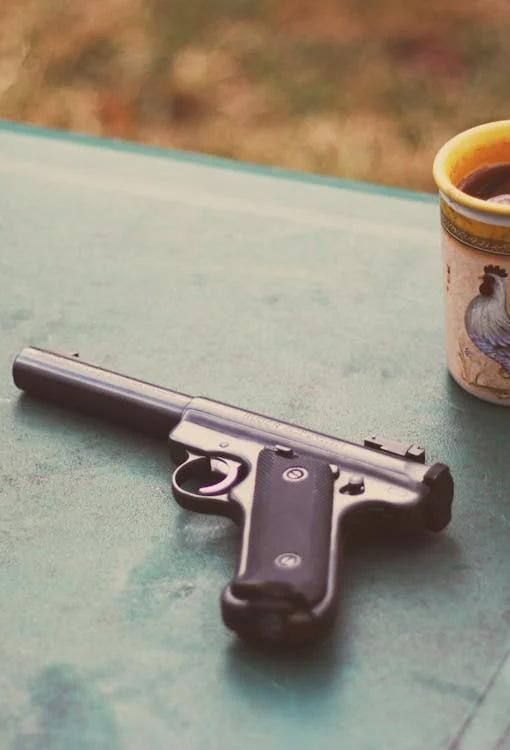
Adolygiad
The Long Walk (2025) Adaptation Goes The Extra Mile
Seven Standen
Design Deputy
Walk or die. This is the simple premise for The Long Walk (2025), adapted from Stephen King’s 1979 horror novel. In dystopian America, under totalitarian military rule after being devastatedby war, 50 boys take part in the annual ‘long walk’. The walk begins at the American-Canadian border in Maine, but has no finish line or time limit. Instead, it continues until only one participant is left standing.
The Long Walk plays with the concept of a death march, where prisoners of war walk significant distances from one location to the next. Most notably, armed guards often execute those unable to keep pace. In the film, walkers are shot for falling belong a speed of three miles per hour (four mph in the original novel), providing plenty of tense moments.
The horror is not supernatural, instead stemming from the limits of the human body and mind. Walkers submitting to exhaustion and the side effects of exertion doesn’t require any suspension of disbelief from the audience. Viewers question how long they could survive constant walking without being struck by leg cramps, sun stroke, or an internal haemorrhage.
After my first viewing, I heard fellow moviegoers refer to the plot as “predictable”. To an extent, this is true. The plot of the ‘long walk’ immediately establishes every character except one will die. But this fatalistic, nihilistic narrative is intentional from King. The Long Walk is a commentary on the Vietnam War (1955-1975), providing direct parallels to the drafting of young men by the military and the long, drawn out suffering they faced as a result. Also worth noting is The Major (Mark Hamill), a relentlessly cruel and powerful figure, being the one in charge of the walk.
The movie emphasises the importance of the journey, not the destination, and focuses on the importance of friendships made along the way. While this is cliché, the characters do form genuinely heartwarming bonds, particularly Pete McVries (David Jonsson) and Ray Garraty (Cooper Hoffman). Their growing love for each other is a central aspect of the narrative. How masculinity and sexuality interact is a key theme, though the tender moments are balanced with humorous ones. As with all of King’s works, racism, misogyny, and homophobia are heavily present in the original book. Although there’s a ham-fisted attempt at diversity by including one Black walker and two Native Americans, all three are racial stereotypes rather than fully-formed characters.
The movie adaptation thrives where the original novel falls down. Not only is there a more diverse representation of American youth, race and class are core to their characters. Collie Parker (Joshua Odjick) rebels against the armed guards, symbolising how the Sioux have continuously fought back against the US Government. This is a stark contrast to the passive Native Americans depicted in the book, which utilises the racist concept of the ‘noble savage’. McVries is a phenomenal example of how to create a complex, nuanced Black character for screen.
Director Francis Lawrence excels at modernising the story for contemporary audiences. His choice to televise the long walk, reminding the economically depressed nation about the value of hard work, is reminiscent of his work in The Hunger Games (2013-present). More important is the decision to focus on moments of light within dark times. Where King sees a dreary walk towards inevitable death, Lawrence sees the resilience of the human spirit during hardship. Although the ending is drastically changed, it delivered the catharsis necessary to satisfy a film audience. It also makes it clear we need to do more than endure oppression. We need to take direct action to stop suffering.

Apocalypse Now (1979): A Masterpiece, A Feeling or Fable?
More Than a Traditional Story, Robert Duvall and Marlon Brando Are Particularly Memorable
Kit Robertson Review Editor
Within the first few minutes, the audience becomes as transfixed as the characters by Coppola’s surrealist vision of the Vietnamese War as a descent into barbarism and madness.
War is depicted as a festering corruption of the mind, senseless but exacting, that lurks before dissecting the characters with clinical accuracy as their sanity is lost to the Nung River. Old film celluloid crackles and burns; the screen and the audience are still for a few moments. The black gradually fades into a stunning wide shot to the whirring din of a helicopter as its blades slice through the Vietnam sky at a soaring altitude.
The film’s engagement with Vietnam as an independent actor was perhaps best described by Coppola: “[My film] is not about Vietnam; it is Vietnam, it’s what it was really like.” That is what the audience witnesses first as the black fades: not a soldier, not an M14 rifle, nor even the military helicopter itself, but a palm forest set ablaze by a howling inferno –the countryside beauty of Vietnam devastated by man’s wrath in a crazed conflict that most now regard as entirely pointless.
‘The End’ by The Doors, a song which could not have been more perfectly timed and paired both technically and themati-
cally, cries out into the ravaged wilderness, in non- diegesis. Contemplative camerawork bides its time, tracking the extent of the destruction. “Lost in a Roman wilderness of pain...”, a despairing Jim Morrison intones like a sermon; a lyric written directly in reference to the enduring trauma felt by Vietnam’s veterans after their discharge.
A sound bridge between the helicopters and a ceiling fan transports the audience from theVietnamese jungle to an awry hotel bedroom. The song softens until it disappears, but it never truly ends. From there, the “wilderness of pain” rears its head as the plot begins: Captain Willard, portrayed by the electric Martin Sheen, focuses his haunted mind in pursuit of the deranged megalomaniac, Colonel Kurtz, in cinema’s most mesmerising, perplexing and riveting rhapsody about the Vietnamese War.
Francis Ford Coppola evokes the hypnotic bedlam of war with breathtaking visual imagery, atmospheric use of sound and sprawling establishing shots that disturb as often as they amaze. The cinematography, directing, performances, soundtrack, colour grading, lighting, wardrobe, score, sound mixing and production value are all effectively peerless. Every frame is rich with a distinctive character and a natural vibrancy that pops from the screen.
Competing for the viewer ’s scattered
gaze, warring components of the production and mise-en-scene operate seamlessly in concert to illustrate the confused depravity of Southern Vietnam and Cambodia. The disharmony and erratic passion of the production are felt as deeply by the audience as they were by the cast and crew. Coppola never grants you a moment’s peace from the psychedelic hostility and shallow degeneracy of conflict.
Thankyouforreadingthisreviewof ApocalypseNow!Thisisthefirstreviewin anew,monthlycolumn,titled‘Kit’sClassic Corner’(somewhatdubiously),thatweare launchingwiththiseditionundertheReview Section.Thecolumnshallfocusonretrospectivereviewsofolderfilm,television, theatreandmusic.Onecanreviewmaterial ofanygenre,style,decadeorinspiration, buttheloneprovisoisthatthecontentmust havebeenreleasednolaterthan1999.We hopethiscolumnwillinspireandattractnew voicestothepaper.
Therefore,ifyou’reatallinterestedincontributingtothiscolumn,wewouldloveto hearfromyou!
Contactreview@gairrhydd.comformore information

Ludo Sports Bar Delivers Us Both Spectacle and Energy
Andrew Stewart Review Editor
Cardiff’s newest sports bar has landed on St Mary’s Street and is already drawing crowds as a game-day hotspot. Whether you’re into football or something more niche, Ludo promises to bring every game to life on a grand scale.
Upon entry it’s clear the place is built for sport. Sleek wooden tables and walls packed with memorabilia give it a contemporary style with a vibrant and social atmosphere. Ludo boasts Cardiff’s biggest outdoor screen and every wall inside is lined with UHD displays. The beer garden’s retractable roof means the action continues rain or shine. Inside, every booth and tableis angled toward a screen so you’ll never miss a moment. Add to that the constant buzz of commentary and the music pulsing between matches and it’s not hard to get swept up in the energy.
One of Ludo’s standout features is choice. Book a booth and you can request your own fixture whether that’s Premier League football or even the NFL. While other venues might screen American football, Ludo is pitching itself as Cardiff’s go-to spot for NFL fans alongside showingmajor global sports every day. It also streams a wide mix of international sport making it one of the few venues in the city where niche fans can feel at home. The fun doesn’t stop at watching. There’s an outdoor basketball hoop and interactive darts inside which give the bar a lively, social vibe. It’s more than just passive spectating; you can getstuck in yourself and both games proved a real hit on my visit.
Food and drink are another highlight as the menu is stacked with crowd-pleasers. It covers theclassics such as burgers and pizzas alongside freshly poured craft beers and a well-curated cocktail list. Prices won’t match a budget pint at Spoons but the upgrade in flavour and choice more than earns the difference and it’s still decent value for a city-centre venue.
Are there any drawbacks? The sheer number of screens can feel overwhelming if you’re after a quieter night and popular fixtures will almost certainly require advance booking to secure a goodview. It also leans more toward a premium bar experience than a relaxed pub one so if you’re after something more rustic this might not be your vibe. Yet that intensity is also part of its charm as the place is designed for fans who want full immersion.
Overall, Ludo Cardiff succeeds in creating something different from the city’s usual sports pubs.With showpiece features like its massive screen and flexible fixture requests it offers more than just another place to catch a game. For students chasing atmosphere and variety Ludo could quickly become the go-to hangout. A premium sports bar that truly delivers on both spectacle and energy. It’s best suited to group nights or lively pre-match meetups rather than date nights or a quiet pint. It’s a great place to soak up the action with an energy that’s infectious rather than chaotic.
Trí, A Dó, A hAon, Siúd ar Siú Iad!
The Race to the Áras is On
The 2025 Irish presidential election campaign is officially underway. Three candidates stand, the fewest since 1990. The Irish president may not directly influence the policy decisions of the Taoiseach or the Dáil (the Irish equivalent of a Prime Minister and the House of Commons, respectively), but they lead Ireland, both in cultural identity and moral authority.
The Irish President may not have a role in policy making, introducing bills or laws, or overseeing ministries or budgets; in fact, the president usually acts on the government’s advice when it comes to legislative concerns. However, although they are not the executive heads of state but rather constitutional ones, this does not mean they are without real influence and power. The president speaks to the national conscience of Ireland; they represent the country abroad and set a cultural tone, acting as a source of moral guidance in times of crisis. The outgoing president, Michael D. Higgins, who served two terms, consistently used this soft power in arguably the most effective and unifying manner of any president since the founding of the state.
Northern Ireland, overseeing the Good Friday agreement and generally being an advocate for Irish identity and diaspora.
Fianna Fáil have backed Jim Gavin as their candidate. Gavin enters the race with almost legendary status as a player and manager in the GAA (Gaelic Athletic Association), Ireland’s largest and most culturally significant sporting organisation. Gavin is certainly a hero to many in Dublin, having managed the Dublin Gaelic Football team so well from 2012 to 2019, but will he be as popular a potential leader across the country? He is run-
Ruaidhrí Gillen Lynch Head of Politics
climate and social justice, as well as Palestine. Connolly seems best positioned at the moment to take on the progressive mantle of office, which President Higgins has held; however, she faces the challenge of appealing to those voters coming from the right who are sceptical of her strong positions.
The battle for the Irish presidency, in the end, is all about who can show themselves best able to embody Ireland and her values. In Ireland, cultural leadership has possibly never been more diverse in the matters covered. From the moral questions of climate and housing to Ireland’s national identity and international image (on issues like neutrality and stances on Palestine and Ukraine), to the ever-present challenge of bridging various social divides (generational ones, urban/ rural ones and class ones).
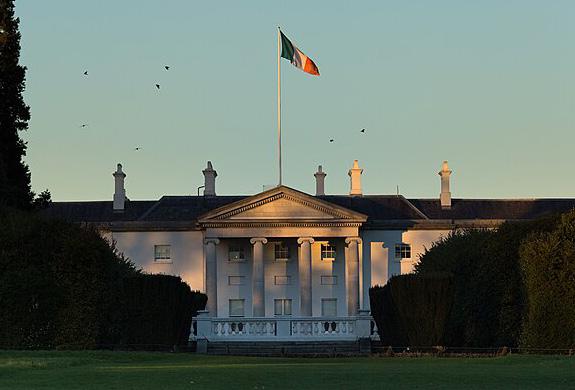
So, who will take Áras an Uachtaráin next? This is truly a race for those interested in women in politics to watch, with women outnumbering men two to one on the ballot. Ireland has a history of very successful female presidents, with President Mary Robinson and President Mary McAleese having already taken the stage. Robinson was the first female Irish President and played a transformative role in modernising the presidency, achieving a greater sense of pluralism on the island of Ireland and is often considered to have played a large role in the elevation of Ireland’s moral leadership on the global stage. Mary McAleese was equally groundbreaking, being the first President from
Zack
Sning on a campaign of steady and predictable positions, though he appears to be struggling to overcome critiques of partisanship and address smear campaigns. Heather Humphreys enters as Fine Gael’s candidate. Humphreys, an experienced minister, has the challenge of overcoming the baggage of her party’s political career and appealing to a wider and non-partisan electorate. Finally, Catherine Connolly. Connolly, backed widely by parties on the left (from Sinn Féin to the Social Democrats to some Independent candidates), is running the most direct cultural and moral campaign. She is presenting a campaign of strong ethics – standing strong on both
Áras an Uachtaráin at Sunset (via Wikimedia Commons)
This begs the question, who is best placed to articulate those values convincingly and who looks to be the most unifying moral figure?
In a time of perhaps the most global uncertainty the 21 st century has seen, does Ireland want someone to continue its strong, culturally and mo ally engaged leadership, or does the nation want a quieter and more traditional figurehead for times of turbulence?
My guess? Well, we Irish feel strongly about it and act accordingly. We are ‘not backwards in coming forwards’ and President Higgins is a perfect example of how universally admired a president who exemplifies this can be. Whoever walks in his footsteps will not only need to have put their best foot forward already, but will need now to follow through with a clear moral and modern message, and exhibit the tenacious integrity the Irish people expect of the chief resident of the Áras.
Polanski: Is Ecopopulism the Green Party’s Key to Success
elf-described “eco-populist” Zack Polanski was elected as the new Green Party leader on September 2nd in a landslide victory securing 84.6% of the vote. Polanski's focus on tackling climate change, advocacy for working people and promise of “bold leadership” encouraged 20,411 Green Party members to place their trust in him. With right wing populism on the rise in the UK, the new Green leader aims to beat them at their own game – the media. Mirroring the tactics of Nigel Farage, Polanski aims to bring the party into the mainstream, capturing the same disillusioned voters that are being drawn to Reform. In a tweet this July, he argued “Cutting through on media and socials is the back-up our door knockers and leafleters need”. Polanski followed through on this immediately after being elected. His first announcement as leader was not a policy or change to the party but the launch of his podcast “bold politics” where he explores progressive political ideas such as the imposition of a wealth tax and challenging anti-immigration policies. Just days after his electionhe took on right wing populism directly by travelling to Farage’s constituency in Clacton to speak with voters anddismantle the Reform leader’s policy on workers’ rights. The video circulated multiple social media platforms, including YouTube and Instagram. In a speech at the Green Party conference earlier this month, the leader reinforced his eco-populist approach saying “You cannot be an effective environmentalist without talking about the inequality in our society”. This perspective has moved the party closer to the left and helped it overcome its image as a single-issue movement. In particular, he criticises the Labour Party’s failure to impose a wealth tax and their changes to the welfare state, pointing to the role two-child benefit cap plays in maintaining child poverty and how cuts to disability benefits deepen inequality. The speech also condemned the government for

Rowan
Stranger-Jones Politics Editor
its stance on Gaza and complicity In Israel’s war crimes, promising that the Green Party “will do everything we can to stop the genocide.” As Keir Starmer moves the Labour Party towards the right, Polanski is offering a real left wing alternative but his strategy hasn't gone unchallenged among Greens. Unsuccessful leadership candidate Ellie Chowns argued “To win under first-past-the-post, we have to connect with a wide range of voters. We do that not through polarising language that appeals only to a narrow segment” However, the surge in Green Party membership post his election tells a different story with an increase of 10% placing the party above 80,000 members - many inspired by his approach to politics and progressive policies. A recent YouGov poll has suggested 28% of Britons would now consider voting Green, with particularly strong support among young people, putting the party on track to reach its goal of 30 MPs in the next general election. But first Polanski's attention is on the 2026 Senedd elections. Within his first week as Green Party leader he made his way to Cardiff to campaign, delivering a powerful speech to members of the Welsh Green Party. He promised the election will be his “top priority” as Wales “isn’t being given the attention it deserves”. In the fully proportional election to the Welsh parliament, polling suggests that leader of the Welsh Greens Anthony Slaughter could become the party’s first ever member of the Senedd, running in the Caerdydd Penarth constituency. The Green Party’s success following Zack Polanski’s election speaks to a change in our political culture – one where bold politicians promising change are appealing to wide voter bases. The new leader’s ability to adapt to this landscape is seeming to put them in a strong position for elections in the coming years.

What Would a Reform vs. Plaid Cymru Sennedd Look Like For Wales?
With the Senedd elections taking place on the 7th of May, polling is increasingly showing the election as a race between Plaid Cymru and Reform. ITV’s September polling shows a near even split between these parties, 30% to 29% respectively, compared to the incumbent Welsh Labour’s 14%. This would break the stranglehold on Welsh politics that Labour has enjoyed ever since devolution in 1999. However, we may also see something that hasn’t happened in the Senedd, a hung parliament, as a majority may be unattainable for all parties. So, what would one of these outcomes mean for Wales?
Plaid Cymru finally becomes the Party of Wales. A Plaid victory would mean a more active Senedd, as they aim to gain increased devolved power. However, an unpopular Westminster Labour government may be unwilling to accommodate this if it is seen as damaging to their electoral fortunes, with the Labour conference demonstrating that panic is already starting to spread due to their low polling figures. We can be certain that during Plaid’s tenure, they would throw the blame on Welsh Labour and Westminster for many of the problems Wales faces. This conflict would become a staple of future interactions. We can expect to see fights regarding issues such as HS2 funding and the decision to keep Scunthorpe’s steel works running, but not Port Talbot’s. What we won’t see however is an independence referendum, with Plaid ditching the policy for their first term in power. Reform gains real power for the first time. For a party that isn’t left wing, let alone one that is far right, winning in Wales may have seemed like an alien concept until recently. Yet Reform faces a very real prospect of forming a government, all whilst not yet naming their leader in Wales (if they even decide to do so, it is not out of the question that Farage refuses to name a leader). Wales would become a playground for Reform to trial out its policies in preparation for winning their real goal of Westminster. Policies such as the 20mph zones and the planned expansion of MSs would be scrapped - not out of evidence-based reasoning, but because they go against Reform’s ideological world view. The reopening of coal mines and the Port Talbot steel works are also policies that Farage has suggested will be enacted. However, like many policies promised by Reform, this seems more symbolic than feasible.
No party achieves the required 49 seats to form a majority. This is what the ITV polling predicts. If this holds true, the possible outcome for the next government becomes more unclear. This would mean that Welsh Labour would become the kingmaker in theory, able to push either Reform or Plaid into power with a coalition government. However, there will be no world in which Labour and Reform form a coalition government, with both too ideologically far apart and both fighting for Westminster. Therefore, we either have a hung parliament, or a Plaid led coalition with Labour, a reverse of the 2007 Labour led One Wales coalition.
It’s clear UK Labour needs to stop treating Welsh voters’ support as a bygone conclusion. Labour’s complacency is leading to their most reliable voting block abandoning them. Cooperation between Westminster and Welsh Labour is essential to stop this, yet this isn’t happening with Eluned Morgan and Starmer who are reportedly not on speaking terms. Labour will face a tough battle to get re-elected in Westminster, the solution to this will have to involve regaining the trust of Welsh voters.
Oliver Dermody Politics Editor
Gwleidyddiaeth
How Gen Z Activists are Reshaping Politics in Asia?
Affan Kurniawan who was run over by a police vehicle at a protest in Jakarta.
How Might the UK Tackle Global Warming?
Rowan Stranger-Jones Politics Editor Jessica Ling Politics Editor
In recent years, youth-led protests over corruption and economic policy have shaken several countries across Asia with substantial destabilising effects.
Nepal’s government was toppled in early September and Indonesia’s government faced serious pressure, echoing the wave of protests that led to the removal of leaders in Sri Lanka and Bangladesh in 2022 and 2024. But these protests share more than their political motives - they’ve been driven by digitally literate Gen Z activists using social media to organise.
Young people across the region used platforms such as Discord, Reddit and TikTok not only to mobilise masses but to combat misinformation, which sets these movements apart from those of other generations. Powerful yet often leaderless, these grassroots movements can gain momentum quickly without the need to draw on the organisation and resources from established political parties or media which is often controlled or censored by governments at times of political unrest.
Students have been at the forefront of protests in Indonesia since February, taking to the streets to demand higher wages and lowertaxes,encouraged by Muzammil Ihsan, head of Indonesia’s largest student union, who has called on more students to join the demonstrations. Some children still in school uniform were also spotted among the crowd. “I cannot accept that the taxes they paid are being used to support people who treat the lives of their fellow citizens as worthless,” said one student protestor in Jakarta Demonstrations in Indonesia escalated on August 28th after the death of motorcycle taxi driver
The unrest became not just about cost of living and unemployment but also about police violence and calls for legal consequences for the officers involved. Protests turn violent over the summer with police deploying tear gas, smoke bombs and water cannons to disperse crowds and protestors retaliating with fireworks and molotov cocktails thrown at Jakarta Police Headquarters. The administration’s failure to suppress the protests resulted in it barely holding onto power. A similar movement swept Nepal in early September, following years of unstable governments and corruption scandals since the republic was established in 2008. Youth protests were ignited by a new social media ban aiming to stifle criticism of the administration - especially a TikTok trend using the hashtag “#Nepokids” exposing the luxuries afforded to the children of politicians.
However, the ban backfired, leading people to take to the streets in protests on September 8th. Key government buildings and Nepal’s largest media house were set on fire, and over 70 people were killed by police before Prime Minister KP Sharma Oli’s government was toppled.
The messages of protestors were reminiscent of similar movements in the region over the last few years where mass youth protests over rising inflation and unemployment led to the ousting of Sri Lanka’s President Gotabaya Rajapaksa in 2022 and Bangladesh’s Prime Minister Sheikh Hasina in 2024. Gen Z’s use of social media has allowed for these protests to become interconnected – a wider movement as opposed to individual national ones. The cross-border solidarity and exchange of tactics make it difficult for governments to suppress the uprisings even when they impose social media bans like the one attempted in Nepal. Driven by young people, digital
Who’s Benefitting From the New Digital ID Scheme?
Tamsin Fraser Contributor
Sir Keir Starmer has announced that all UK residents will require a digital ID to prove their right to work in the country. The scheme will come into effect by the end of this current Parliament as part of a digital gov. uk wallet.
Promoted as “making it easier for people across the UK to use vital government services”, including helping renters prove their identity to landlords, improving access to benefits, and making it easier to apply for free childcare, the practicality of this scheme cannot be ignored. 93% of UK adults own a smartphone, providing a more accessible approach to identification compared to passports and driver's licenses. Estonia is considered the gold standard by the UK government for digital ID, with most Estonian citizens holding a digital ID that can be used to vote, register births, and file taxes. Similarly, the EU is expected to launch the Digital Identity (eID) wallet, enabling all EU citizens to access online and offline public and private services. There lies a more cynical aspect to the scheme, however – typically hidden in the fine print, beneath the aforementioned universally attractive promises. The prospect of work is one of the driving factors for small boat crossings into the UK, and Starmer’s promise that “you will not be able to work in the United Kingdom if you do not have a digital ID” sends a clear message that illegal entry into the UK will result in the inability to work. Alongside the rollout of digital IDs, all companies will be prevented from using National Insurance numbers as a means of identification. Currently, it is easy to borrow, steal, or share National Insurance numbers to fake the right to work in the UK. Photograph identification can, in theory, prevent any abuse of this system. This theoretical deterrence of illegal migration allows
Labour to further pander to its alienated rightwing supporters, as Reform UK – notorious for its tough stance against immigration – climbs the approval polls. However, the scheme has so far drawn criticism from almost all of Labour’s political opponents, regardless of their opinions on immigration.
Leader of the Opposition Kemi Badenoch quipped on X, "Can we really trust [Labour] to implement an expensive national programme that will impact all of our lives and put additional burdens on law-abiding people? I doubt it.” Nigel Farage, Leader of Reform UK, also commented on X, “I am firmly opposed to @Keir_Starmer’s digital ID cards. It will make no difference to illegal immigration, but it will be used to control and penalise the rest of us. The state should never have this much power.” Such a proposal is not new for the Labour government. Indeed, former Prime Minister Tony Blair legislated for voluntary ID cards during his tenure in the early 2000’s, but the scheme was quickly scrapped by the Conservative-led coalition government due to privacy concerns.
It is worth noting that the new digital IDs will only be mandatory for UK workers; students, pensioners, and other non-working UK residents are not required to participate in the scheme. Many civil liberties groups, however, still argue that this system could set the scene for more invasive identification in the future. Public support for the scheme has dwindled greatly in the past few months, with net support dropping from 35% in June 2025 to -14% since Starmer’s announcement. A petition opposing the scheme has garnered over two million signatures, describing any national ID system as a “step towards mass surveillance and digital control”. A decision on whether or not Parliament will debate this petition will be announced by October 14.
With each passing day, we are constantly reminded of the dangers to our ways of living that Climate Change imposes on us, as well as the increased possibility that we shall soon reach a global warming of 4°C above preindustrial levels. The consequences of a seemingly insignificant change in temperature are more catastrophic than we may initially believe; The Green Facts, a non-profit project summarising reports on the environment and sustainability, state that some of the consequences of an increase in temperature such as this would increase the risks for food production caused by dry regions getting dryer and wet regions becoming wetter, an increased frequency of high-intensity cyclones in tropical regions and an overall irreversible loss of biodiversity – such as the coral reefs. 1 Representative from different political parties within the United Kingdom have been making their stances on the crisis known to the public by either discussing their plans with other world leaders in the United Nations General Assembly or presenting pol cies that they believe will be the most beneficial for the country.
The United Nations General Assembly was held on Wednesday the 24 th of September 2025 and had each member echo the severity of the climate crisis and their own plans to cut down on their greenhouse gas emissions. The voice for the United Kingdom in this summit was the Deputy Prime Minister David Lammy, whose concerns for climate crisis was with each member of the United Nations that is involved in the COP29 – The 29th Climate Change Summit involving a significant increase in climate finance to 300 billion USD annually by 2035 – continuing to deliver on their Nationally Determined Contributions to keep the world on track for a 1.9°C global warming instead of the predicted 4°C. Lammy also mentions that the United Kingdom’s dedication to reaching the new temperature target of overall global warming and reducing greenhouse gas emissions has helped to grow the country’s green economy
three times faster than the economy overall. What this means is that there has been an increased demand from the people for more sustainable products and services to aid in our everyday lives that the country has seemingly been placed on a path that should soon lead them to a reduced carbon footprint and push for solutions that are more environmentally friendly as well as economically efficient.
While this does initially seem to be the overarching consensus of the country, there still remain handfuls of individuals whose standpoints do not align with what Lammy claims, alternatively believing that the government should prioritise the country’s economic growth over the current global climate crisis. Leader of the UK Conservative Party Kemi Badenoch is one of those individuals who want the economic status of the UK to be at the forefront of these discussions and completely scrap the failed targets of the Climate Change Act, a framework that Britain was passed by a Labour government 17 years ago and has approximately tens of billions of pounds invested into it. 3 Badenoch has said that replacing the Climate Change Act with a new energy source that she and the Conservative party see as cheaper and more reliable would be more beneficial for Britain, arguing that the green economy that Lammy claims to currently aiding the country has actually done very little or almost nothing to cut global emissions. These claims have however placed Badenoch under some controversy with various conservation charities and energy groups, one of which – the energy secretary Ed Miliband – saying that a policy such as this would be more of an “economic disaster and a total betrayal of future generations” than a success. 4 Other people within these groups echo the possible damage to UK’s economic status, as they currently do not recognise any data or evidence from Badenoch that proves removing the Climate Change Act would have as much on an impact on the economy as she claims.


Is the Recognition of Palestine Enough?
Have you ever heard the saying “actions speak louder than words”? It’s a principle taught to children: a verbal apology isn’t enough. You must show sincerity through changed behaviour to be truly sorry. This is precisely what the many nations that have recognised Palestine in the UN have failed to understand. Instead, they offer what amounts to a half-hearted apology for Palestine’s destruction with a simple declaration: “Palestine is a state.”
The UK, India and Canada have all agreed in the UN that there is a recognisable Palestinian state. Yet they continue to, whether directly or indirectly, contribute to the IDF, enabling the violent forced displacement of Palestinians. What ,then, is the purpose of recognising a state whilst funding its destruction? Is it to win votes? To resurrect the long-dead notion of a two-state solution? The recognition of Palestine is meaningless coming from countries that clearly don’t view it as legitimate.
the capacity to enter into relations with other states. Palestine might claim two of these qualities, but what about defined territories and a functioning govern-

Palestine even fails to meet most accepted definitions of statehood due to Israeli displacement. A state generally requires four qualities: a defined territory, a permanent population, a government and
ment?
Gaza and the West Bank have been geographically divided for over 77 years by Israel, and politically separated since 2007 after a violent conflict between Hamas (which the UK views as a terrorist
Putin’s Drones in Poland A Public Show of Intent
In an unprecedented development of the everbuilding Russian onslaught in Eastern Europe, the 9th of September saw over a dozen Russian drones enter Polish airspace. Whilst NATO allies were quick to scramble and neutralise the Russian incursion, the strategy and intent of Russian leader Putin is now more than ever called into question. Is Putin revealing the initial stages of a “master plan” of further Eastern European warfare, or does a historical lens help us to uncover international posturing by the Russian state?
Ukrainian leader, Volodymyr Zelenskyy, in the days following the attack, was keen to argue the Russian incursion to be the initial stages of Putin’s plans to advance into another European nation, claiming that it’s only a matter of time before he starts a war on another front. Whilst at face value, given Russian aggression and unrelenting onslaught thus far, this may be quite easy to believe, we can gain insight into an alternate perspective through evaluation of historical, Cold War parallels.
“Brinkmanship”, so called by Eisenhower’s US Secretary of State, John Foster Dulles, might well be re-emerging as a central military and foreign policy tactic under Putin, and could even serve as a more comprehensive explanation of his real intent on an international scale. Initially coined during the late 1950’s in an era of post-nuclear US-Soviet confrontation, “brinkmanship”, was a word for tactics that involved making your opponent feel as though relations are at a breaking point, or brink, that would imminently overspill to a devastating war. The incentive of course, to “scare off” the opponent by merely seeming ready to commit to all out conflict.
M.W. Contributor
organisation) and the PNA (Palestinian National Authority, which leads by the Oslo Accords over areas in the West Bank). How can Palestine have defined territories when it’s governed by two separate organisations? Physically divided by Israel, neither are likely to yield simply because Western states have declared Palestine a state. As for the government, the UK only negotiates with the PNA. What does this reveal about the differential recognition of Palestinian statehood in Gaza versus the West Bank?
Paul R Williams wrote in “What Makes a State? Territory” that independence-seeking groups face two options under international law: fight to obtain statehood by force, or suffer human rights violations severe enough to prompt intervention and recognition from external democratic states. “Either way, the likely result is more violence.” The recognition of Palestinian statehood may worsen conditions, painting a target of contempt on Palestine for Israel. Israel’s actions show that it does not consider Palestinians as a legitimate people. Without meaningful intervention, Israel will likely intensify attacks on Palestine out of defiance, simply because it can.
The recognition of Palestine has accomplished nothing tangible for Palestinians; it offers no protection, only words. This is not enough for the people of Palestine.
Hugo Keenan Contributor
into question, especially given the immense strain the war is putting on Russia’s economic situation. This seems to only grow the modern day comparison with brinkmanship.
Furthermore, taking into consideration the traditionally hawkish foreign policy techniques of US president Donald Trump, and most recent renaming of the department of defence to the “Department of War”, it’s probable that Putin may be trying to contest the advances in US defence policy in a Cold War esque confrontation, strengthening further the brinkmanship comparison that has been laid out. From this we can certainly piece together a battle of posturing and of egos, almost responding to a question of “who can appear to be the most threatening to one another?” without ever engaging in a physical attack, as opposed to the continuation and even expansion of the war that Zelenskyy argues.

Whilst it’s true that the global political landscape during the Cold War period and the modern day remain starkly different, similarities certainly come from the displaying of intent by the same nations today. Much like his Soviet predecessors, it’s no secret that Putin desires to be seen by the world as a strong and powerful leader, especially now during critical moments in his war with Ukraine. It’s also evident that since his initial invasion in February 2022 he’s not relented in his advance. However, to what extent he intends to grow his European war is thrown
So now with the history of Cold War, foreign policy, military tactics, and historical relationships all laid out, a better idea of the word ‘intent’ can be established. With this, we can certainly also unpick and evaluate the kind of message Zelenskyy is trying to get across. Does he truly believe that Putin wants to engage in a renewed conflict, despite the clear economic and military distress that the Russians have shown so far? And how well does he really understand Putin’s intent, is his judgement clouded by the primary necessity to attain more aid to fund the constant battle on the Eastern front?
Through evaluation of world events and assessment of traditional Cold War rivalries, a more nuanced approach might therefore be formed, rooted in Cold War era policy, exposing the necessity driven argument of Zelenskyy, that Putin wants a renewed war in another European nation, when in fact his true intent and the reasons behind it may run deeper.
Gwleidyddiaeth
The Truth Crisis: Are We Letting Artifical Intelligence Go Too Far?
It is undeniable that AI has entangled itself deep into our daily politics and personal lives; it feels impossible to get away from it. From what we see online, to how decisions are made about us, we need to start asking ourselves important questions: who controls it? How is it affecting the world around us? And are there enough restrictions in place to keep it safe? Understanding AI isn’t just an option anymore; it's the key to staying informed and ensuring we are not caught off guard by the invisible systems shaping our lives.
AI is a tool and like any tool, its impact depends on how it's used. Former Science Secretary Peter Kyle said “Technology has huge potential to transform public services for the better, we will put it to use to cut backlogs, save money and improve outcomes for citizens across the country.” This marks a major shift in how our government uses AI to support the public sector with a focus on transparency, responsible algorithms and real-world improvements in public service delivery; it is hard to see the downsides to its involvement.
However, the concerns about how AI plays a part in our society and in our politics remain unsettled and increasingly restless. Can the tech companies who own AI platforms
really be trusted to police themselves? Grand View Research, a Californian market research firm, predicts the global value for AI will jump more than 530% by 2030. With profitability so high, it’s easy to see why people are worried that ethical concerns won’t be a priority.
This scepticism towards AI is very apparent; in a 2025 Pew Research Center study, 71% of Americans said they would like a political candidate less if they had used AI to write a political speech. This drops to only 56% of people feeling less confident about what they learn if they find out a news article they agreed with has been written by AI. We trust what we know and despite the many positives AI may be able to bring us, many people still prefer the human realness behind political tasks and jobs.
Concerns grow even more when considering the endless power that AI-generated misinformation can put into the hands of people who wish to cause division. For now, those of us who have grown up with social media and almost constant access to phones may be able to laugh when our grandparents confuse what we see as an obvious AI created video for reality, but how long until we are confused
BIG IDEAS
Sophie Scott Politics Editor
ourselves? How long until we are having to try and double check every video to make sure we are not being duped into believing any political headline we see on social media? How long until the flood of misinformation AI is helping to create drowns the concept of the truth?
George Orwell wrote in 1984 that “The Party told you to reject the evidence of your eyes and ears. It was their final, most essential command.” We understand this warning for what it is now: the flames of a forest fire fast approaching, something we need to act quickly to contain. As soon as videos become indecipherable as real or fake, we will lose our ability to navigate politics in online spaces. We will face the impossible task of deciding what to trust and what needs further scrutiny.
AI has much to offer us: it can help in the public sector, support how we work as students in accordance with university guidelines, and it can even help with scheduling your life like the private assistant you never had. But we must venture into this unknown part of the internet with open eyes. We must make sure that it is not abused to misinform us on global affairs and social issues. We must make sure to fact-check what we are not sure of. We must believe our eyes, our ears and our guts.
Weaponising Violence Against Women: the Far Right’s Moral Police
On 13th September, the UK witnessed its largest nationalist rally in recent memory. Tommy Robinson’s ‘Unite the Kingdom’ rally saw over 100,000 people gather in London. This rally was not only fuelled by nationalism but by fear. “Our women, our daughters are scared to walk the streets” Robinson told his cheering crowd. “Their safety has been taken from them”, he claimed, stolen by “the hands of open borders, mass uncontrolled immigration”. This rallying cry to protect women from the apparent threat posed by illegal immigr tion is nothing but a smokescreen to hide the far-right’s aggression. With a track record of intimidation, threat and violence towards women, the far right have nothing to show for the protection of women’s rights.
Reform UK and Advance UK have capitalised on the fabricated need to protect women and girls from the threat of illegal immigration. Their anti-immigration narratives have shifted from focusing on the pressures illegal immigration places on jobs, housing and schools to characterising migrants as sexual predators. They claim illegal immigrants are responsible for violence against women, yet there is no statistical evidence proving immigrants are more likely to commit such crimes than any other member of society. In fact, these crimes are most commonly committed by individuals known to the victims; friends, colleagues, family members or intimate partners. That is not to
say random cases of violence against womendo not exist, they do. But using these isolated cases, especially when the figures show differently, to scapegoat entire immigrant communities ignores the reality: most violence against women is committed by men they already know, most often in their own homes.
41% of the 899 people arrested for taking part in the far-right riots last July and August, claiming to protect women from violence, had been reported for domestic abuse. With under 24% of domestic abuse cases reported and convictions among the most difficult to obtain, it is possible the true number of domestic abusers at the riots was much higher.
These figures highlight the gross hypocrisy of the far right. They claim to protect “our women, our children”, yet they are often the perpetrators of such violence, or are willing to stand alongside those who are. Holding these men accountable for gender-based violence would require dismantling power structures the far right depends on. Consequently, they deflect the blame onto marginalised communities, weaponising the pain and trauma of women to promote their racist ideologies and spread division in our communities.
Blaming immigrants for such violence is particularly cruel when considering the realities many have fled. Most did not come to the UK simply seek-
Iona Hamilton Contributor
ing “a better life’, they escaped war, persecution, gang violence or economic collapse. Though not always recognised as refugees, many have endured unimaginable trauma.
I have worked for refugee and migrant support organisations for over four years. During that time, I’ve heard some of the most disturbing instances of sexual violence. With watered eyes, fathers have told me of the rape, murders and abuses their daughters, wives and family members have suffered. Now, having escaped such horrors, they’re accused of being the perpetrators they once fled.
This is not to say cases of violence against women never happen at the hands of immigrants, they do. However, these cases are isolated and extrapolated to make insidious racist claims. In doing so, the far right fails to address the broader issues and risks that let perpetrators go unchallenged. They exploit the trauma and pain of women to advance their racist narratives, diverting attention from the systematic nature of gender based violence. We have a responsibility to expose and reject this narrative. The voices of women deserve to be heard without manipulation. Those who have escaped the horrors of war deserve our protection. We can achieve this with unity where the far right aims to divide, and love where the far right seeks to hate.
Politics
Trump’s Change of Ukranian Position: A Substantial Shift?
In a surprising turn of events, following his meeting with Ukrainian President Volodymyr Zelenskyy at the UN General Assembly on the 23rd of September, Donald Trump recently posted on Truth Social that he thinks that, with the support of the European Union, Ukraine is “in a position to fight and WIN all of Ukraine back in its original form.”
This shift, while substantial indeed, is not completely out of the blue. In an exclusive phone call to the BBC back in July, Trump was quoted as saying he was “disappointed but not done” with Russian President Vladimir Putin - one of many signs that the leaders’ relationship was steadily disintegrating. This comes in stark contrast to their previously cordial, even collaborative working relationship. Why, then, has this shift taken place, and what exactly could it mean?
Ostensibly, this deterioration stems from Trump’s frustration with Putin’s failure to end the war in Ukraine. As early as the beginning of his second term as US President, he has criticised the Russian leader, threatening tariffs should he not end the “ridiculous” war, warning “severe consequences”. This recent turn, however, marks unquestionably the most significant example of Trump showing direct support for Zelenskyy and Ukraine, as opposed to just criticising Putin and Russia. Meanwhile, he described the afore-
mentioned meeting with Zelenskyy and other European leaders as “very friendly”, while the Ukrainian President referred to him as “well-informed”. This, itself, is contradictory to the clear hostility between the pair evident previously, such as when they got into a shouting match in February this year, with Trump insulting Zelenskyy as a “dictator without elections.”

Isaak Hewitt Contributor
said that the Trump administration is currently debating whether to allow the use of Tomahawk missiles in Ukraine, which could mark a humongous turning of the tides in Ukraine’s ability to defend itself against Russian invaders.
Key to note is that Trump gets the so-called “final determination” on the matter. Whilst his words have been in favour of Ukraine, will his actions reinforce that? Despite their friendship currently facing an impasse, it is true that both he and Putin have been close allies for a number of years. What it ultimately comes down to is whether this impasse is one that they will get over, or if Putin’s prolonging of the war is the straw that has finally broken the camel’s back, and will prompt Trump to act in support of Ukraine, rather than just speaking as such.

That Trump is showing support for Ukraine is an undeniably positive sign for their position in the war, which has brutalised the country since February 2022, yet this change in attitude has, as of right now, not been reflected in any substantial changes in policy. This may change, though; US Vice-President JD Vance has
Football Stadiums Over Hospitals? You Need to Sort Out Your Priorities!
Morocco’s largest protests in years, led by a decentralised Gen Z collective, reveal deep fractures in the kingdom’s development model and test the monarchy’s political strategy ahead of a looming royal succession.
In late September, crowds of young Moroccans filled the streets of Rabat chanting, “We want hospitals, not stadiums.” Thousands of young people across at least eleven cities have rallied under the banner of Gen Z 212. A leaderless online collective, they demand investment in healthcare and education, denounce corruption, and challenge government spending priorities, as billions are poured into preparations for the 2030 World Cup. The protests have exposed widespread frustration with poor public services and deepening inequality. At their core, they highlight the growing divide between Morocco’s ambitious modernisation projects and the unmet needs of its citizens, posing a serious political test for the monarchy ahead of royal sucession.
The protests reflect years of frustration over failing public services, limited opportunities, and widening inequality that have left many young Moroccans feeling excluded from the country’s development.Morocco’s health system suffers from chronic underfunding and staff shortages, with fewer than eight doctors per 10,000 people and significant disparities between urban centres and rural communities. Education faces similar challenges: inadequate rural infrastructure forces students to travel long distances,while frequent teacher strikes have disrupted schooling nationwide. Economic pressures intensify these grievances, with youth unemployment reaching 36% and more than half of under-35s saying they have considered emigrating in search of better prospects.
Against this backdrop, government spending on highprofile infrastructure projects, including stadiums for the 2030 World Cup, has deepened feelings of neglect. Whilst Morocco has invested heavily in modernisation, these pro-
jects haven’t improved everyday access to hospitals, schools or jobs. Frustration boiled over after eight pregnant women died in an under-resourced hospital in Agadir, alongside slow earthquake recovery and rising living costs.
While protests are not new in Morocco, the cur-

rent mobilisation stands out for its scale, organisation and demographic base. Previous movements, from the 2011 Arab Spring demonstrations to the 2016–17 Hirak Rif protests and more recent strikes by teachers and medical students, were largely confined to particular regions. The state managed these through targeted concessions and repression, preventing discontent from spreading.
Certainly, Trump’s words could be described as erratic recently. From a rant on Truth Social about how people taking Tylenol while pregnant is what causes autism - in direct opposition to medical evidence - to claiming he “hates” his opponents and doesn’t “want the best for them” at the funeral of Charlie Kirk, going against Kirk’s wife Erika’s prior speech about forgiving her husband’s killer, he has said many things some might consider to be unfounded, unreasonable and unprofessional. This raises the question, then, of how much stock can be put into his words about Ukraine.
Samira Abbey Contributor
At the centre of the protests is Gen Z 212, a decentralised collective organised through Discord that emerged in mid-September. Lacking formal leadership or ties to political parties, it has relied on social media to synchronise protests across multiple cities with striking efficiency. This mode of organisation signals a shift in how political mobilisation is taking shape among Morocco’s youth: rather than channelling demands through established parties or unions, young people are constructing alternative digital spaces that operate outside the traditional political sphere. Similar digital movements elsewhere, such as Nepal’s youth uprising earlier this year, highlight how Gen Z is using technology to reshape political engagement in contexts where formal avenues are limited or distrusted.
“Freedom, dignity and social justice” is echoed across the country as demonstrators called for improved public services, accountability for corruption and the resignation of Prime Minister Aziz Akhannouch. An open letter addressed to King Mohammed VI urged him to dissolve the government and release detainees. Their demands were formalised in a letter to King Mohammed VI, which called for the dissolution of the government and the release of those detained during the demonstrations. The authorities initially met these calls with mass arrests and violent clashes that left three people dead near Agadir. As the protests continued to grow, officials adopted a more conciliatory tone, promising dialogue and faster reforms, although little of substance has materialised.
As of 5th October 2025, the protests have entered their eighth consecutive day. Gen Z 212 has continued to emphasise peaceful mobilisation, sustaining momentum through coordinated online campaigns that bypass state-controlled narratives. How the monarchy responds to this sustained pressure will be a test of its political adaptability ahead of a sensitive royal succession.
The Presidential Office of Ukraine (via Wikimedia Commons)
Sport
Looking Ahead to the Upcoming International Break
Mael Le Paih Sport Editor
Wales face a campaign-defining international break with an important friendly against England and a crucial World Cup qualifier against Belgium. After securing just two wins in their last five matches, Craig Bellamy’s side will be eager to rediscover their rhythm and build momentum heading into a pivotal stage of their campaign. The clash with England offers a valuable chance to test the selves against top opposition, while the meeting with Belgium could prove decisive in shaping their qualification hopes. With the return of experienced midfielder Aaron Ramsey adding both quality and leadership, Wales will be hoping to turn promise into results. England will be familiar competition for Wales as one of the oldest rivalries in interntional football, as they face each other at The Wembley Stadium for the first time since 2011.
The fixture against Belgium will be a decisive fixture in Wales’ campaign to reach the 2026 FIFA World Cup in North America next summer. Wales are currently placing 3rd in Group J, one point behind North Macedonia and equal on points with Belgium, who have a game in hand. Group winners directly qualify; the four remaining spots are determined by play-offs with the 12-group runner up and four teams from last year’s nations league phase.
Since the last international break, the squad has undergone a lot of changes, primarily with the return of Aaron Ramsey to the national team. This will be the first time he features in the Wales jersey since his move to Pumas UNAM in Mexica in July. Also, returning to the squad are the Leeds United pairing Ethan Ampadu and Joe Rodon, Coventry City defender Jay Dasilva and Wrexham forward Nathan Broadhead; all of which missed the Kazakhstan and Canada fixtures due to injury. Returning players include Stoke City’s Sorba Thomas and Neco Williams from Nottingham Forest, who
George Jones Head of Sport

Thave impressed and become the backbone of the Welsh side. Sorba Thomas believes Bellamy has brought a different side out of him, as he has become an integral player at the international level.
Following the away visit to Belgium in June, Thomas impressed displaying his capabilities and thinks Belgium will be “shaking in their boots” for the return fixture. The last Wales fixture featured a young side where they narrowly lost 0-1 to Canada in Swansea. The lack of experience was said to be the deciding factor; therefore, Craig Bellamy has reinforced the side with the needed experience to succeed in the following games.
Craig Bellamy has urged his Wales squad to replicate the success of Gary Speed’s side and create their own special Wembley memories. Despite the fact the fact it is a friendly, the England match is likely to be the toughest test of Bellamy’s tenure. Around 6,500 Wales supporters will be at the Wembley Stadium in support. The game against Belgium will be played in front of a full house, providing a special occasion at the Cardiff City stadium. Losing all of their last 5 games against England, Wales will look to settle the close rivalry.
The test against Belgium in their World Cup qualifier will prove difficult with Belgium undefeated in their last 5 games. Last time the teams faced each other, Belgium claimed the advantage over Wales in the current qualifying campaign back in June of this year with a 4-3 victory. Despite Belgium taking a three-goal lead, Wales levelled the score before Kevin De Bruyne settled the game with a late winner. Whoever finishes top of the group qualifies for the World cup, while the runners up have a place in the 16-team play-offs in March. If Wales finish third, they are all but guaranteed a play-off spot having won their nations league group last year. However, in hopes to automatically qualify, they will need to win all three of their remaining matches in hope the Belgium drop points.
WWomen’s Rugby World Cup
Gracie Bradley Sport Editor
ith the Women’s Rugby World Cup 2025’s final whistle, an absolute extraordinary month’s worth of sporting excitement ended in a massive victory for one of our home nations, England after the team previously lost to New Zealand 3 years ago, however, the heartbreaks of the past are well and truly healed by this year’s triumph for the Red Roses. From the span of 22nd August to 27th September, 16 teams from across the globe competed in stadiums around England for the chance to call themselves world champions. Although not as great as a result for the Welsh, there certainly were plenty of moments which showcased pure tawlent and skill throughout the exciting tournament. At the beginning of the tournament, 4 pools existed, meaning the starting 16 qualified teams were placed into randomised groups that would hopefully see them through to the knock-out rounds. Our own nation, Wales, was Pool B surrounded by the likes of Canada, Scotland, and Fiji –all popular and talented teams. Although Wales proved to be a team of passion and determination, their performances lacked strength. As a result, Wales fell to the bottom of the leaderboard with no tournament wins.
England, however, won every match played during the group stages and, therefore, progressed through to the knockout stage. England then played big teams, Scotland and France during the quarter and semi-finals, but these two teams were no match to the talented English squad both losing with drastic scores, 40-8 and 35-17. These results re-
Review of Welsh Teams in the EFL So Far
he 2025/2026 EFL season is now in full swing as we are now around the two months into the season. It is fair to say that so far for the four Welsh teams, the opening few weeks have presented themselves as a mixed bag in terms of how well each of the clubs have performed thus far. Despite not performing the best on paper, it feels the most logical to turn attention to the Hollywood-owned, bigspenders Wrexham AFC. The Red Dragons’ start back to life in the second tier of English Football after a 43-year period outside of the division has been a peculiar one to say the least. The back-to-back-to-back promotion winners built their identity over the last three seasons as being a well-drilled side that are hard to break down and more importantly very solid on home turf. However, so far this season Phil Parkinson’s men are winless at home in five games yet boast 7 points from four away games, two of which against recently relegated Leicester and Southampton contributing to one of the better away points tallies in the league. Putting the strange home and away form to
one side, performances are improving weekly especially as new signings such as Lewis O’Brien, Welsh international Kieffer Moore and Issa Kaboré continue to make an impact. Despite some criticism towards Reds’ manager Phil Parkinson and currently being in 18th position, the 25/26 season is shaping up to be a solid one for Wrexham who may even hope to make a late push for the playoffs come May next year.
Moving on from Wrexham, we have Swansea City. 9 games into the season the Swans have a satisfying record on the eye; achieving three wins, three draws and three defeats, whilst scoring and conceding 10, landing them in 12th position in the table. Finishing in midtable is no stranger to Swansea having finished no higher than 10th since the 20/21 season. Slovenian international Zan Vipotnik has been a standout so far netting four goals in eight games. Despite a solid start, concerns have been raised about if Swansea’s position is slightly flattering as all three wins have come against the two Sheffield clubs who currently occupy the bottom two as well as Blackburn who sit just above the relegation zone in 21st. Another solid start for the Swans, but performances may need to improve to achieve a more desirable league position by the end of the season.
Next up is the high-flying yet recently relegated Cardiff City, who so far are enjoying life in League One as they sit 3rd in the table having won 7 of their 11 games and boasting the best away record in the division. Despite being a largely inexpe-
warded England with a well-earned place in the final against equally strong nation, Canada. Held in a sold-out Allianz Stadium with a record-breaking 82,000 fans in attendance, both teams fought hard to be the champions, but only one could lift the trophy at the end. A tough, highly competitive battle between the two ended with a 33-13 victory to the Red Roses of England, which concluded the 2025 tournament.
The Women’s Rugby World Cup 2025 gave a stage to so many women all of which are such highly skilled, talented athletes who have proven themselves worthy of having the opportunity to perform and represent their nations. Not only did these amazing women represent their countries, but they also stood for women in sport and proved to girls across the world that girls can and will play contact sports – extremely successfully too.
Step outside the scoreboards, the trophies, and celebrations and everyone can see just how much women being on a global stage within sports means to the people not yet performing on it but wish to be. The Women’s Rugby World Cup 2025 was an absolute showcase of women in sport succeeding and excelling.
Roll-on 2029, where the tournament will be held in the land down-under, Australia – let us hope we get to see more exceptional performances as we saw this year!


rienced side and relying on youth talent, the Bluebirds have really impressed so far especially showing how they can gain points in diverse ways. Whether it be grinding out a result or putting teams to the sword, gaffer Brian Barry-Murphy has got City playing. An obvious name of note has been 19-year-old Dylan Lawlor, who has started phenomenally and has even earned a Welsh cap thanks to his performances. Despite currently sitting just one point off the automatic promotion places, Cardiff will fancy themselves to go straight back up and rightfully so after a fast start to life in the third tier. Moving down to League Two now we reach the first and only Welsh team who really are not enjoying the season so far; Newport County currently sit bottom of the fourth tier with only 1 win from 11 games played and just 5 points on the board. County manager, David Hughes is currently enduring his first professional managerial tenure. That said, results need to improve fast, or Hughes could find himself out of a job or worse County could be relegated back to non-League for the first time since 2013.
Chwaraeon
Rugby Championship 2025 - Victors and Losers
SLuke James Sport Editor
outh Africa have finally done it. Rassie Erasmus’ Springboks have won a back-to-back Rugby Championship for the first time in their history with a tight battle at Twickenham against an enthusiastic Argentinian side, winning only by 2 points. With the title victory secured, it is time to look back at who proved a point, and who lost out.
Australia, who had been knocked out of the Group Stages at the 2023 Rugby World Cup, now under the departing Joe Smidt, came into their stride. Repeat losses to the All Blacks do not do their involvement justice, including their incredible comeback from 22-5 down against the Boks to win 22-38 in the opening round at Ellis Park. Nic White retired from rugby and returned multiple times, showing his skill and providing a key figurehead to embolden the Wallabies’ effort. James Slipper made it to 151 caps before calling it quits in the final round at Perth, but the real stories come from the young guns coming through. Joseph Sua’ali’i, the rugby league winger-turned-union outside centre, proved more than his worth, alongside Max Jorgensen, a dynamic back who can cover wing and fullback. Australia’s power game has drastically improved, showing physicality in scrums, alongside good mauling, and rucks. Will Skelton, after being released for international duty by La Rochelle following disagreements between Rugby Australia dk the French club proved again why he deserves test starts, getting involved and making impacts throughout the rest of the tournament. Australia’s Rugby Championship is indicative that this is a team with potential, and more will be shown under new head coach Les Kiss during the Autumn Series. Australia’s Rugby Championship: 7/10
Argentina played hot and cold. Wins over the All Blacks and the Wallabies showed potential, and so did their performance at Twickenham, but there were also elements of their issues visible in their losses. Being pushed off their own ball by 7 men in a scrum must’ve hurt the forward pack in the final match, and the complete hammerings they were handed by the All Blacks (41-24) and the Springboks (67-30) showed
gaps in Los Puma’s defence. Felipe Contepomi has done a stellar job in developing the Argentinian attack, with threats like Santiago Chocobares proving key to creating some incredible tries. Pablo Matera and Juan Pablo Montoya showed their form again and again, displaying that not only are the Argentinian old guard showing no sign of slowing down, but also that they are becoming even more threatening. However, discipline, especially when Argentina were on the back foot, was far from perfect, and silly penalties as well as desperate, dirty play became costly, giving away crucial territory. It felt at points that Argentina had taken the Pro-D2 approach to rucking. Although there were considerable losses, and Argentina finished at the bottom of the log once again, Los Pumas actually performed quite well, beating the All Blacks and Wallabies who were both carrying some good momentum, as well as putting in a solid performance at Twickenham despite an agonising loss. Argentina’s Rugby Championship: 6/10
New Zealand should be mostly chuffed. The Eden Park record was extended twice, and they beat every opposition. Leroy Carter has announced himself onto the scene and Ardie Savea proved himself again as one of the best backrowers in the world. Scott Robertson’s men put in dominant performances against Argentina and Australia, and although they did lose a match to Los Pumas, they bounced back to win against the World Champions. However, there is one result that will influence all analysis. 13/09/25. 43-10. A thirty-three point loss. Beaten. Bruised. Dominated. To think the score was only 17-10 at the 60th with 20 to go seems almost impossible. Yet it happened. The worst loss in New Zealand rugby history, conceding it to the Old Enemy, at home. A match that will be remembered for as long as the 57-0 win in 2017. While the other 5 matches were hard fought, tense, and New Zealand always felt in the fight no matter what, and were often leading, this one was different. Players like Beaden Barrett had suffered a similar loss in London two years ago to the same opposition, the score 35-7, but this was so much worse for the All Blacks. Destroyed at the scrum, exposed through the wide channels, and physically battered. New Zealand’s Rugby Championship was almost triumphant but a loss on this level is a signal to all

that they can be beaten, or is it? It almost feels impossible to judge their championship because they were an 8/10 team, and even in the first half in Wellington they were at the same level. It felt like the two juggernauts of rugby colliding in battle, like Napoleon facing Wellington at Waterloo. But when the collapse came, they were exhausted to the bone. The Northern Hemisphere must be weary because New Zealand are coming with a point to prove.
New Zealand’s Rugby Championship: 7/10
South Africa. World Champions. Back-to-back winners. Those three sentences almost say it all, but was this season as good as it could have been? Sure, Sacha Feinberg Mngomezulu proved himself as a potential generational fly-half, and Ethan Hooker showed how much the Boks could do with a powerful winger, but what about the losses. Eden Park was one, but it almost seems excusable, considering the All Blacks have won their last 52 matches there now. But Ellis Park? They may have been undercooked but that does not excuse the level of collapse they suffered. Furthermore, conceding two tries in the opening 10 at Eden Park showed that they could be stretched thin, and the defensive prowess the Boks are famous for is becoming more of a myth. That said, there were so many positives. Dealing the ABs their worst ever defeat (again), alongside back-to-back victories is far from signs of weakness, and many of the silly tries came from player errors rather than structural issues. Tonyball looks relentless at its best, and the Boks are finding their rhythm. The likes of R.G. Snyman, Jan-Hendrik Wessels, and Ryan Nortjie have provided so much impact in the forward pack, always being involved both with the ball and during rucks, scrums, and particularly for Nortjie, in the lineout. Much is to be said about the potential for further evolution, as they look to take on two of Europe’s best sides in the Autumn Tour, but if the structure of exhausting an opponent through power, and then brutally carving them up continues, this Bok side could truly evolve into the greatest.
South Africa’s Rugby Championship: 8/10
What a championship it was this year, it is sad that we will only see its next full iteration in 2028/2029.

Football Pays Tribute to Matt Beard
AHarvey Knowles Sport Editor
t the end of September, at a time when football fans across Europe returned to their stadiums, pubs, and sofas as the new foo balling season began, the tragic news broke that former Liverpool Women’s manager Matt Beard had passed away.
A time of footballing hope and excitement quickly turned to pain and disbelief, as the reality of the 47-year old’s death settled. Football had lost not only a great manager, but a champion for the women’s game, a friend and a character. Above all, a family had lost a husband and a father.
Beard was one of the greats of football, having won back to-back league titles as Liverpool Women’s manager, breaking the dominance of Arsenal Women who had, before Beard’s successes, won nine league titles in a row. Beard left Liverpool Women in 2015 to manage Boston Breakers in the United States, which was seen as a pioneering move.
Following six difficult years for Liverpool Women, who found themselves in the second division of English football, Beard returned to the club. By the end of the season, he had solidified his role as a Liverpool legend, leading the club back to the first division. In a statement, Liverpool said Beard was a man of ‘real integrity and warmth’ and that he will be remembered by everyone at the club with ‘genuine fondness’. The impact he had at Liverpool was clear.
However, it was not just Liverpool that Beard left a lasting effect on. Beard held a managrial role at Chelsea for three years, prior to their dominance of the English game. Chelsea, speaking on Beard’s death, said that Beard played a fundamental role in Chelsea’s success in ‘laying the foundations’ prior to Emma Hayes’ arrival at the club.
Emma Hayes herself, speaking to the League Manager’s Association, said ‘Matt Beard was an incredible investor in the women’s game and someone who will be remembered by his players, his staff, and his colleagues for the amazing character that he was’.
Coverage of the WSL across the past weeks has been filled with tributes to Beard, with players who had worked with him across the years offering heartfelt condolences and reminiscing on stories of the great man they knew. Observations of a minute silence, black armbands and banners filled stadiums across the league, emphasising the legacy left by Beard on all fans of the sport. Current Liverpool Women’s manager Gareth Taylor told the BBC that Beard’s family had been ‘blown away’ by all the love that had been directed towards Beard and his family.
One of Beard’s former players, Natasha Dowie spoke to the BBC about the late manager, saying that he was ‘one of the of the best managers to ever work with’. Dowie was a part of the team that won back-to-back titles with Liverpool and was one of many players who spoke so highly of him. Dowie contiued to say, ‘I will miss him, I will miss his laugh, I will miss his hug, his big cheeky smile but we will make sure he’s not forgotten’, conveying a sentiment shared by many who knew him.
Crossword

ACROSS DOWN
2. Standing tall and ready for action? (5)
1. Green (13)
12. State of depression (10)
13. Global warming precipitator (10, 3)
15. AA or AAA (7)
17. High-altitude ululation (5)
18. “He’s like a million miles away”, e.g. (9)
21. Harmless untruth (5, 3)
23. Hitchcockian spinning sensation (7)
24. What Scottish Mars bars are (5)
27. Not genuine, especially if deceptive (5)
29. Ice land (10)
32. Green-thumbed occupation (8)
34. “Island” near Cardiff (5)
37. Sisyphean tale (4)
39. Airborne anomaly (3)
40. Burn lightly (3)
41. Undergo decomposition (5)
42. Baby bum cleaning aid (3, 4)
44. Miners’ finds (4)
46. Gets rolled out for celebrities (3, 6)
49. Chlamydia, to its friends (4)
51. Planet? (5)
52. Garden tool you wouldn’t call your GF (3)
53. Wail (like a whale?) (7)
54. Green land (5)
56. Palindromic sir counterpart (5)
57. Burn lightly (4)
58. Without electrical charge; with labour bargaining power (9)
61. Nether lands (6)
62. Bidenesque balderdash (8)
64. To give in; to spelunk (4)
65. Extract after which a citation must follow (5)
67. Musical performance by a soloist (7)
69. Attractive but unintelligent young man (5)
70. Students’ favourite pasta accompaniment (5)
73. Pre-owned (4)
74. In excess of what’s sufficient or necessary (11)
75. Dressed deceptively (9)
3. Conjunctivis (4, 3)
4. Lots of room for furniture (5)
5. It’s right on the map (4)
6. Student’s magnum opus (12)
7. Man-made haze (4)
8. _____ hole (5)
9. Green (3, 5)
10. To smoke up in close quarters (3, 3)
11. Pearl harbourer (6)
14. Frequent world traveller (12)
16. Sound preceding “Gesundheit!” (5)
19. Despised social outcast (6)
20. Greek vowel that means very little (4)
22. Po land (5)
25. 0.0000254 kilometres (4)
26. Participate in a think tank session (10)
28. Maine land (3)
30. Fowl in bowling (6)
31. Consequential 20th-century rivalry (4, 3)
33. Gair Rhydd’s esteemed colleague (6)
34. Bendy show of respect (3)
35. Column complement (3)
36. Chess concluder (4)
38. Tango prerequisite (3)
43. Cloud nine feeling (8)
45. Car carousel (10)
47. Wine remnants (5)
48. Born with a silver spoon (10)
50. Praiseful funeral speech (6)
55. Less industrious (6)
56. Poe’s “The _____ of the Red Death” (6)
57. Coal miners’ companion (6)
59. To microwave (4)
60. Green (7)
62. Ridicule (4)
63. Test that turns blue in alkali, red in acid (6)
66. Computer or corona (5)
68. Wales’ edible emblems (4)
70. Sudden sharp pain (4)
71. Apple aide (4)
72. “Onion-like” green creature (4)
